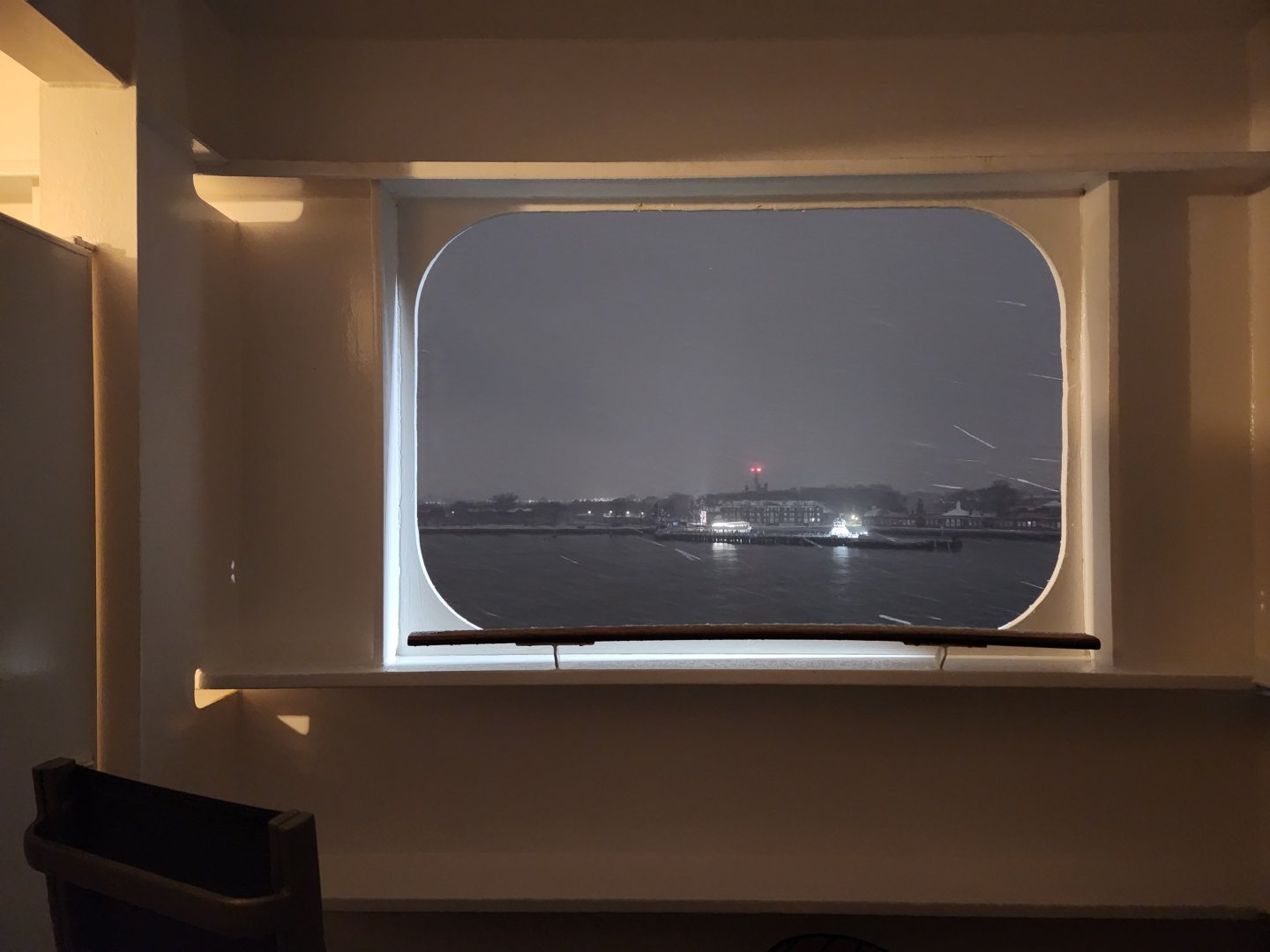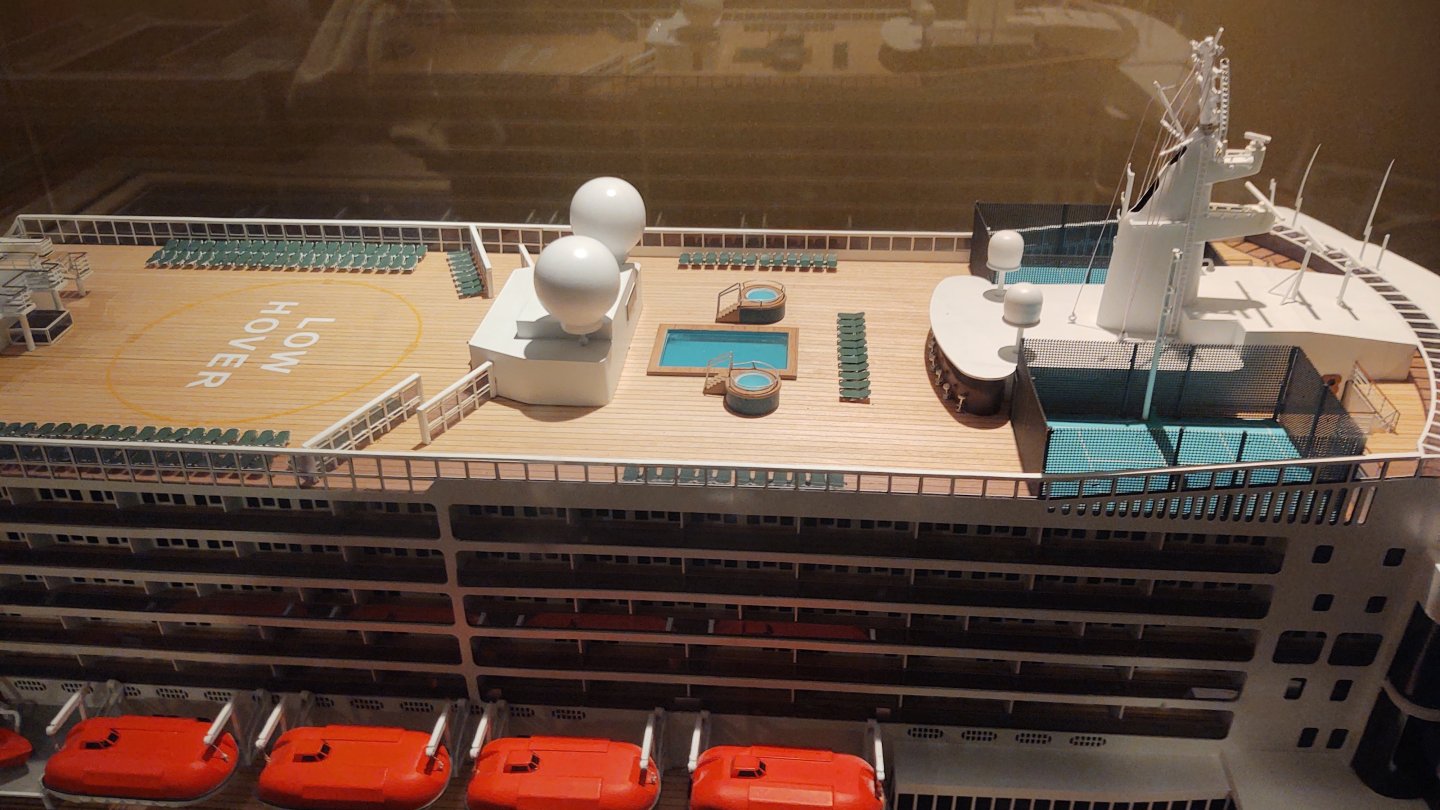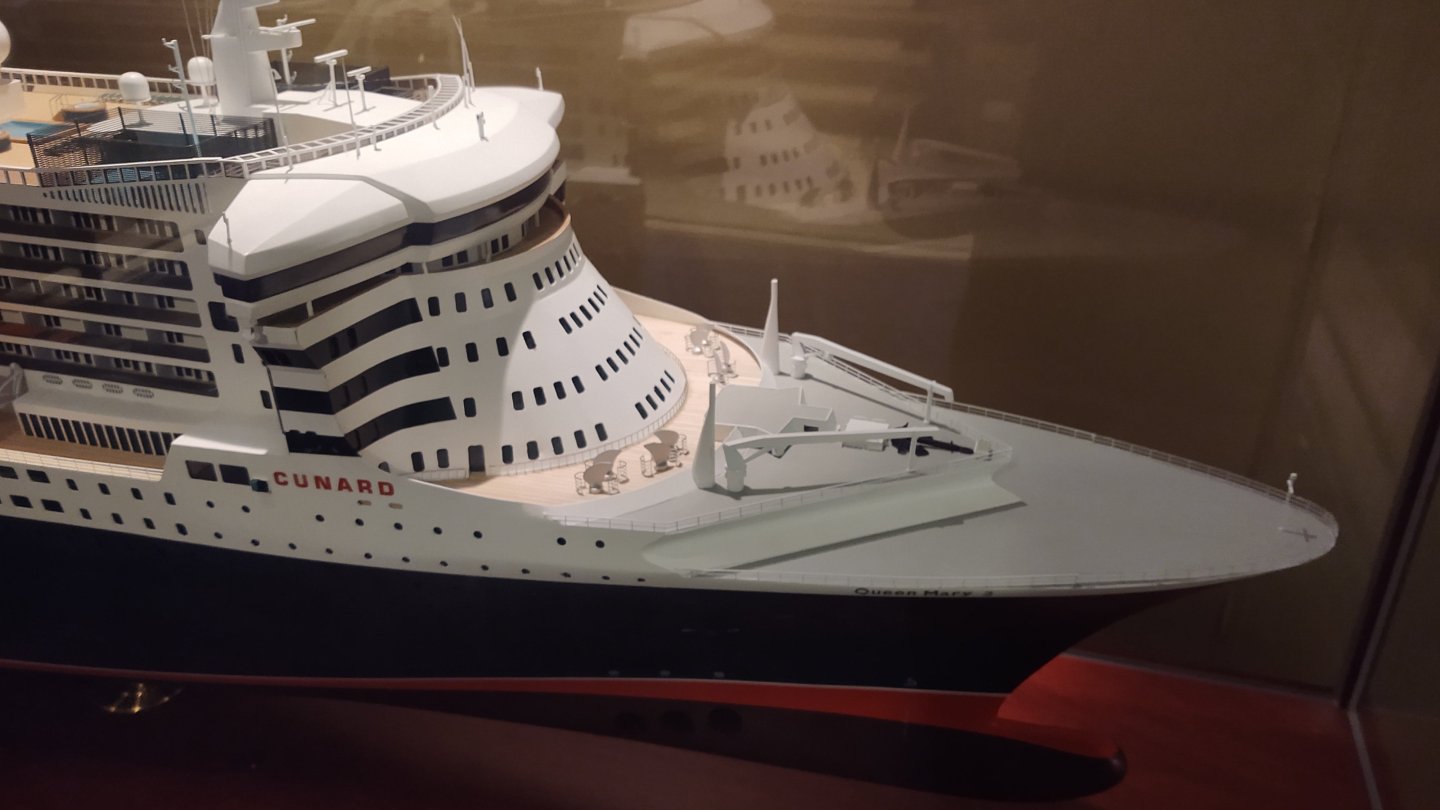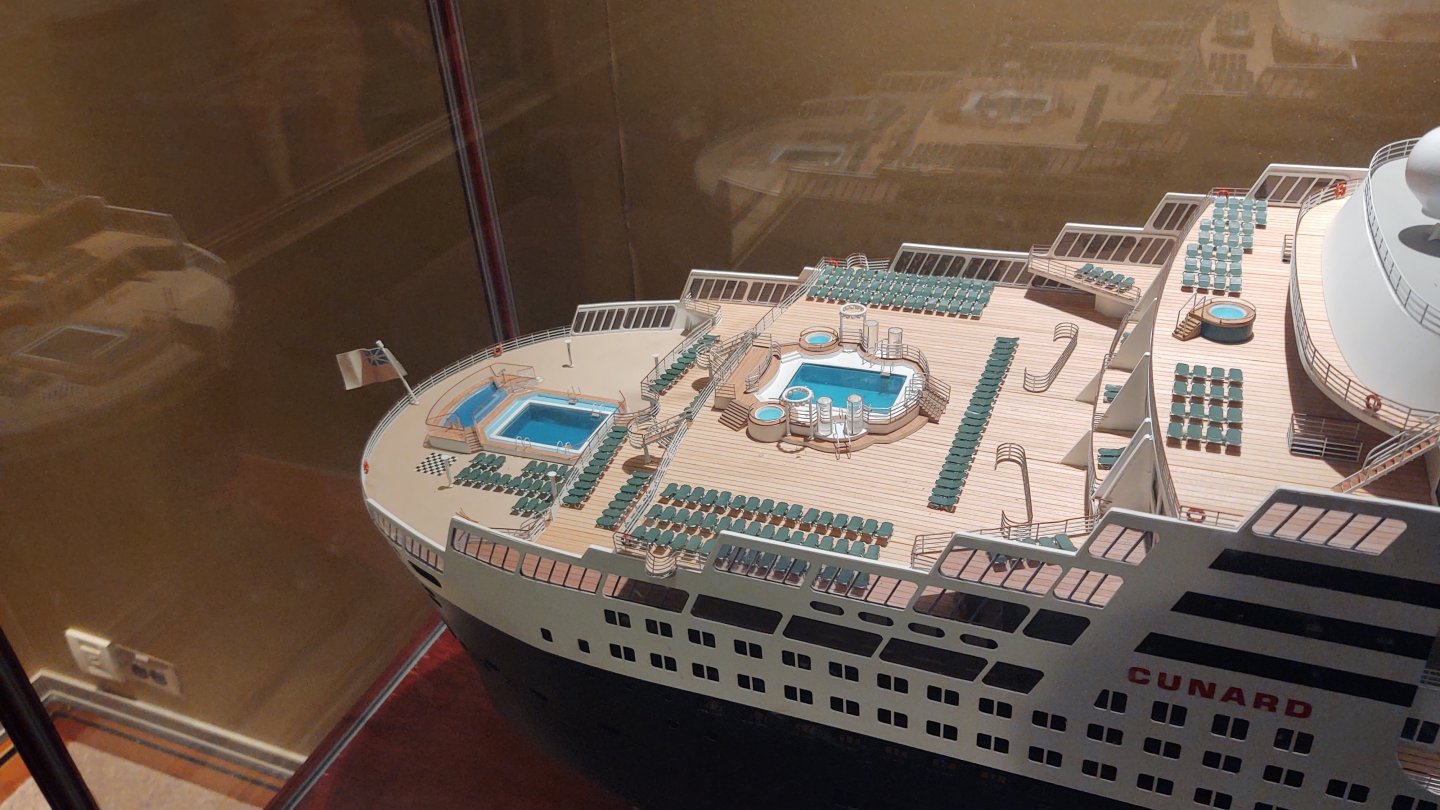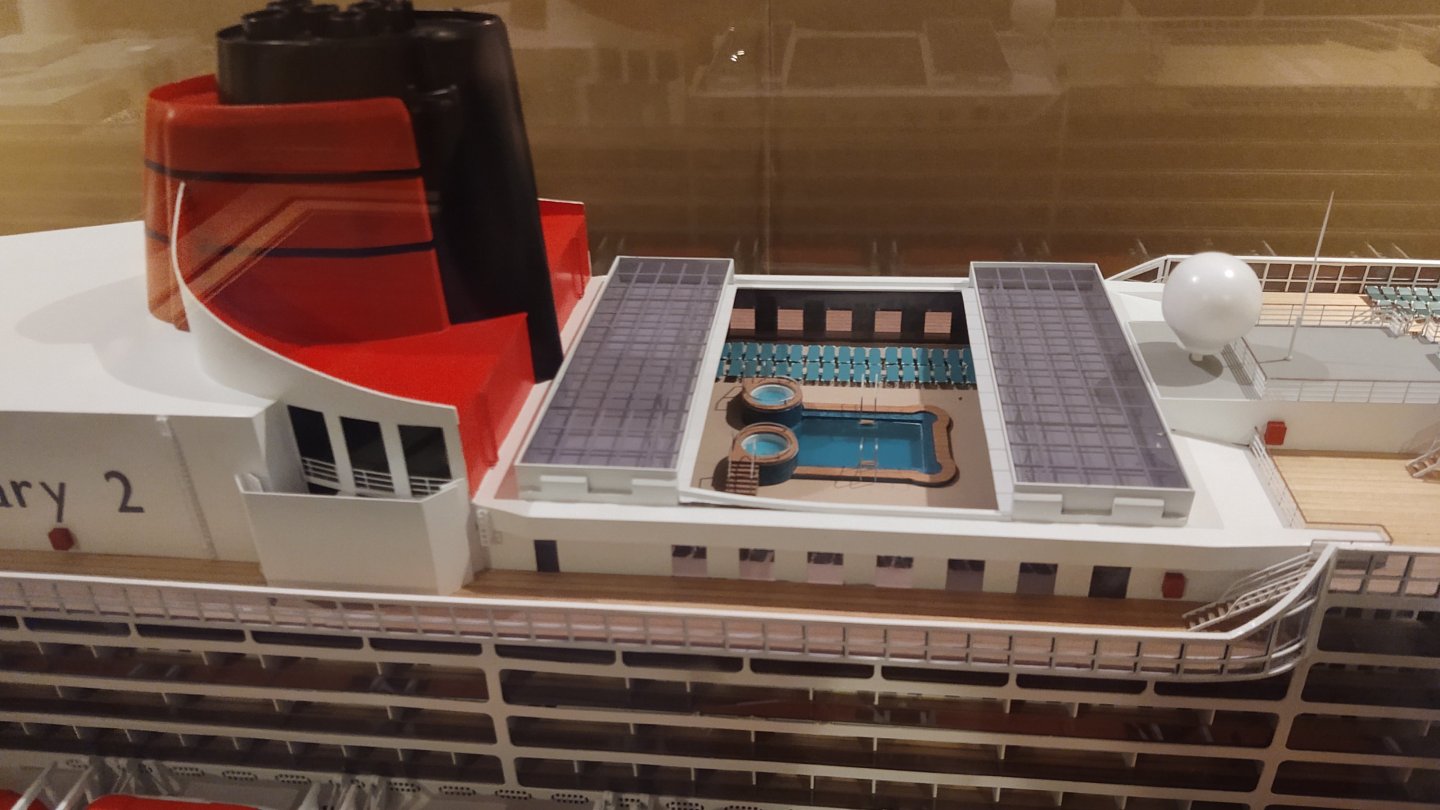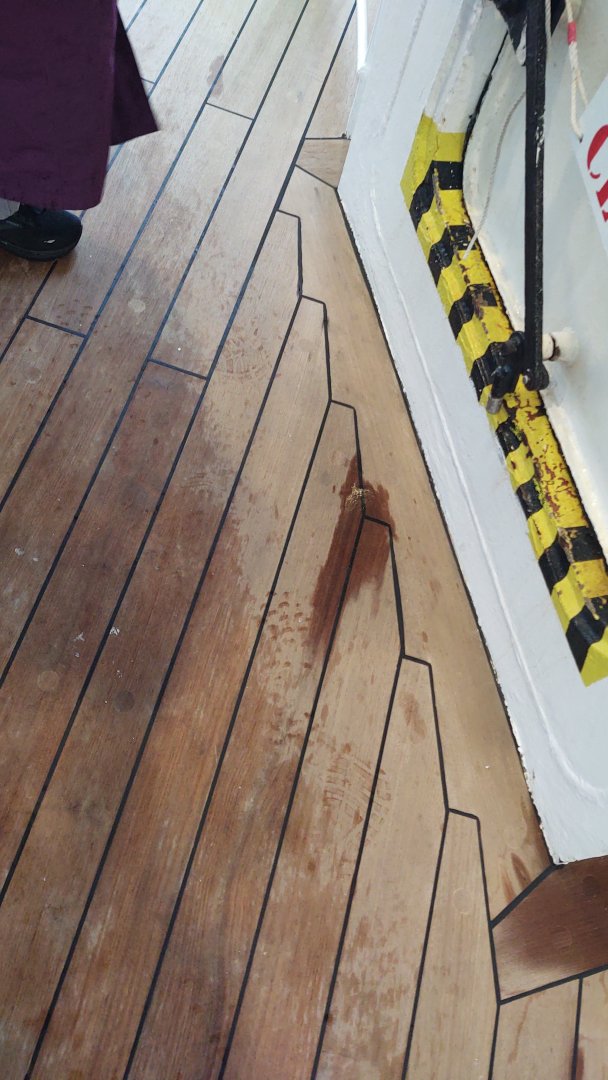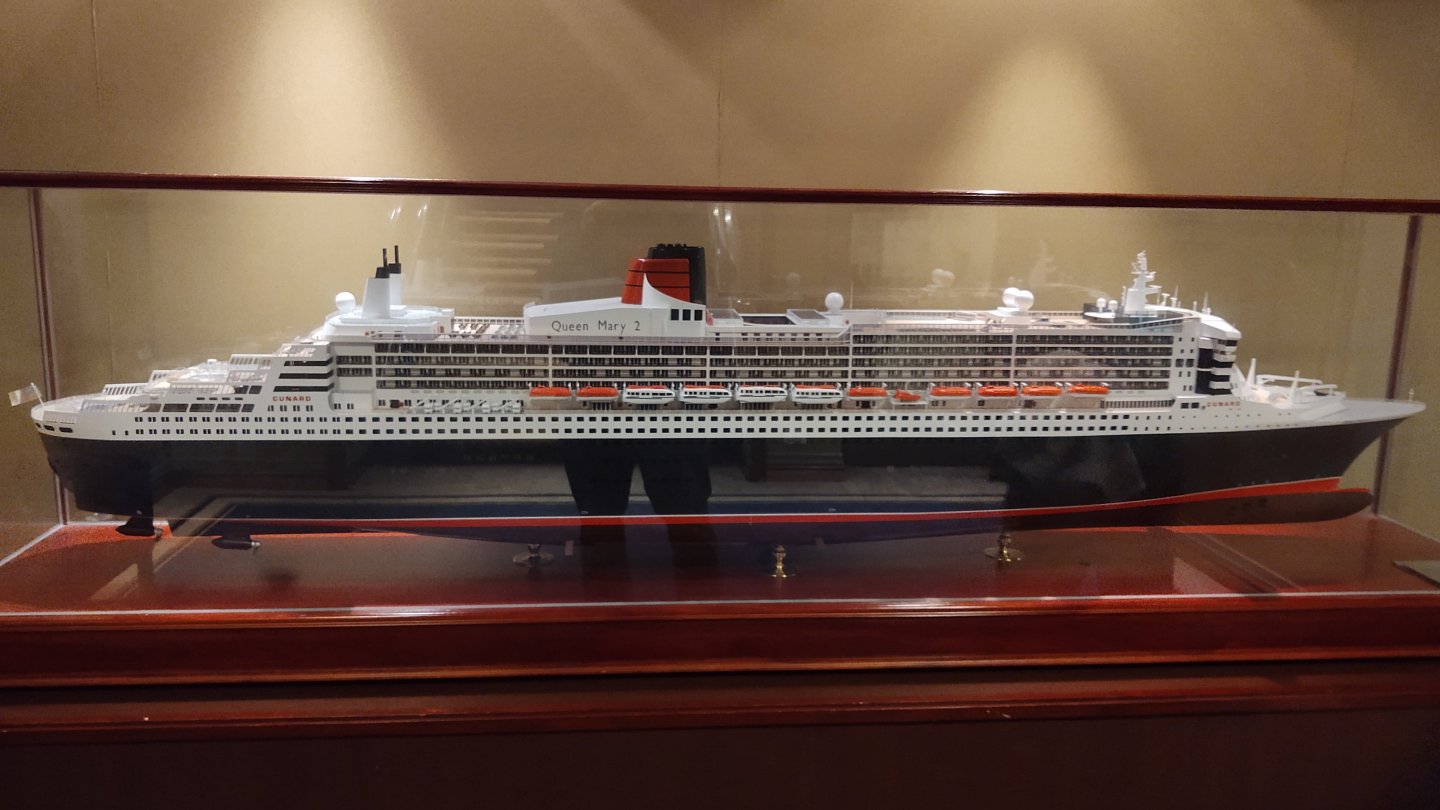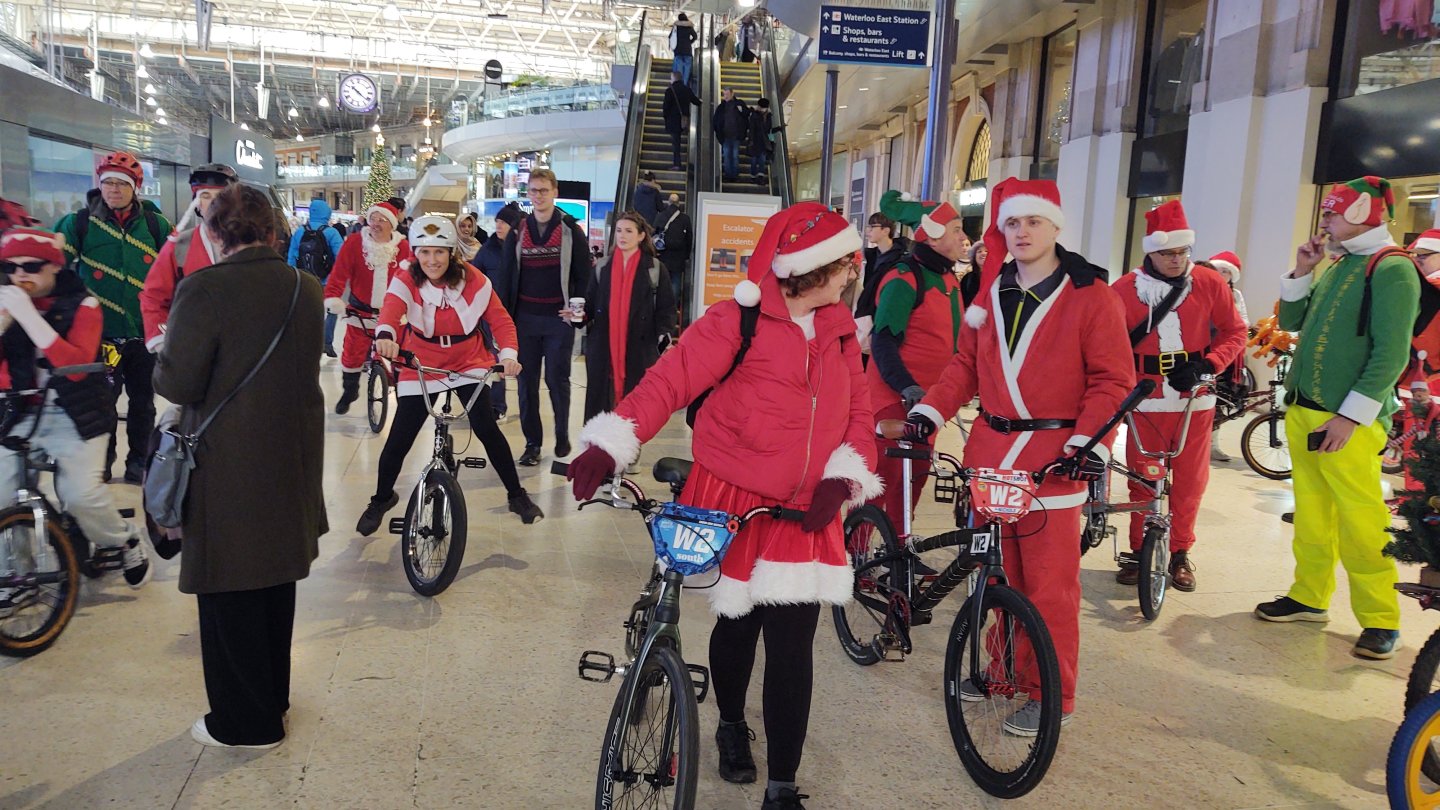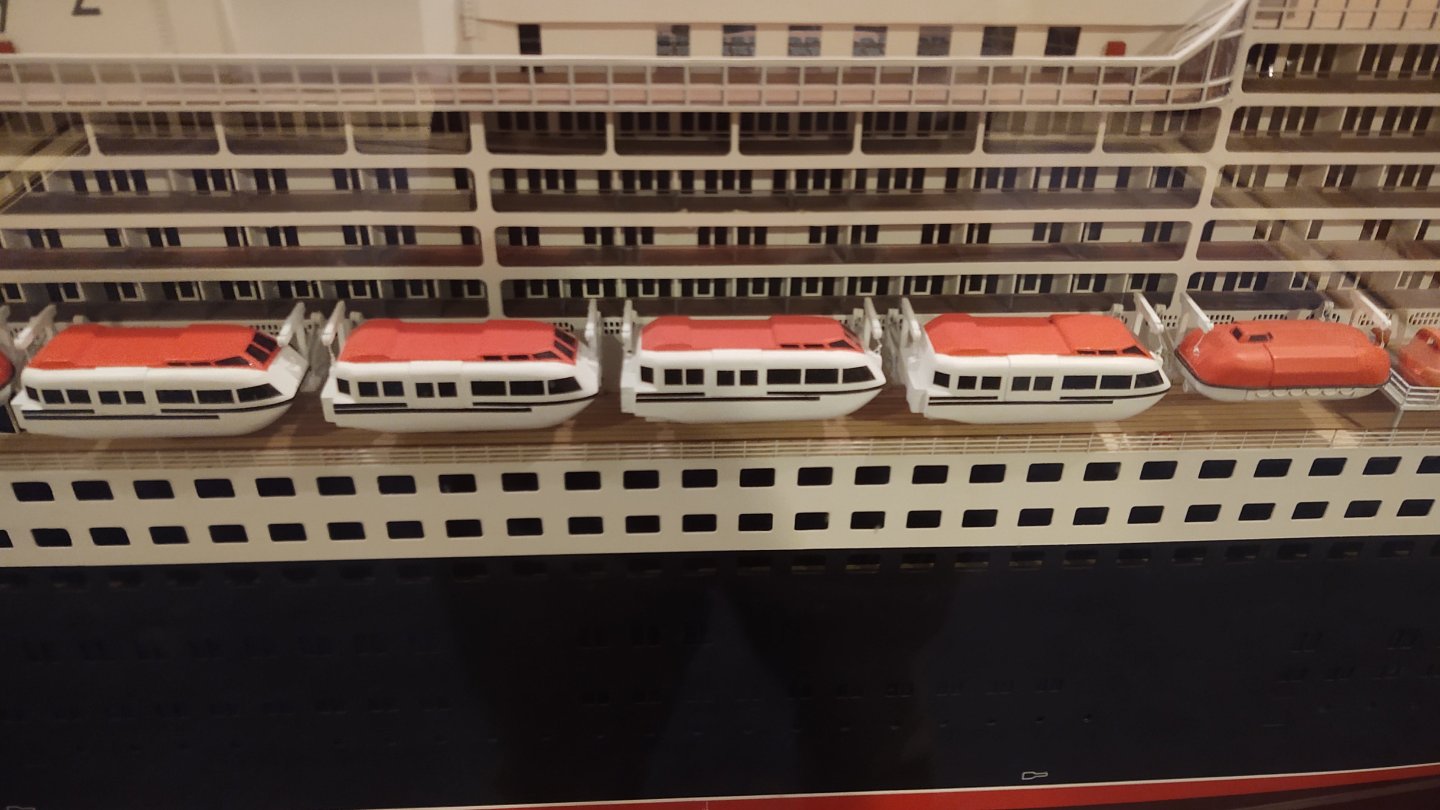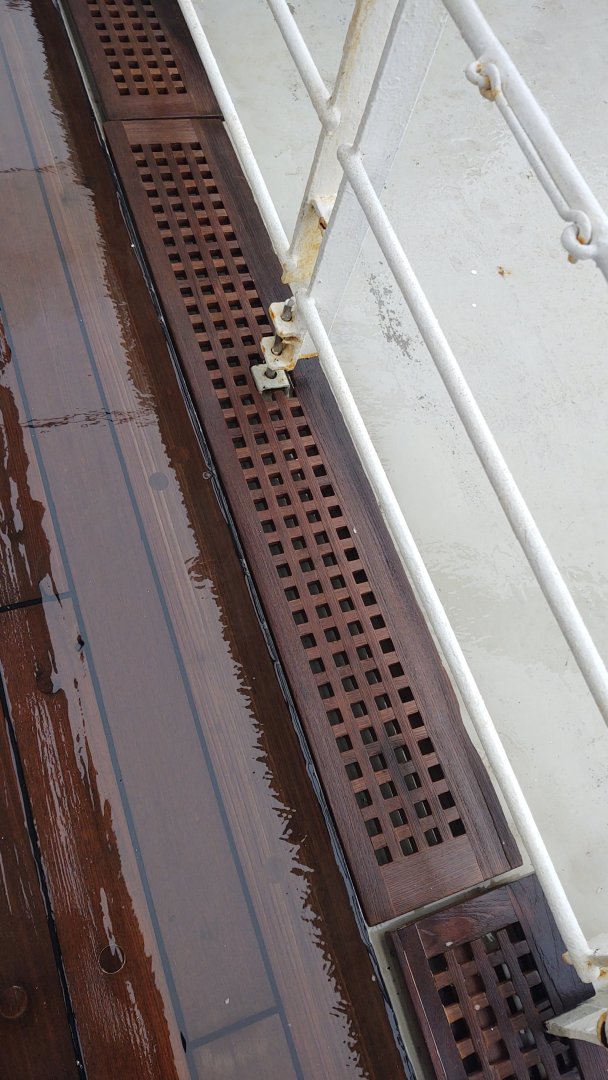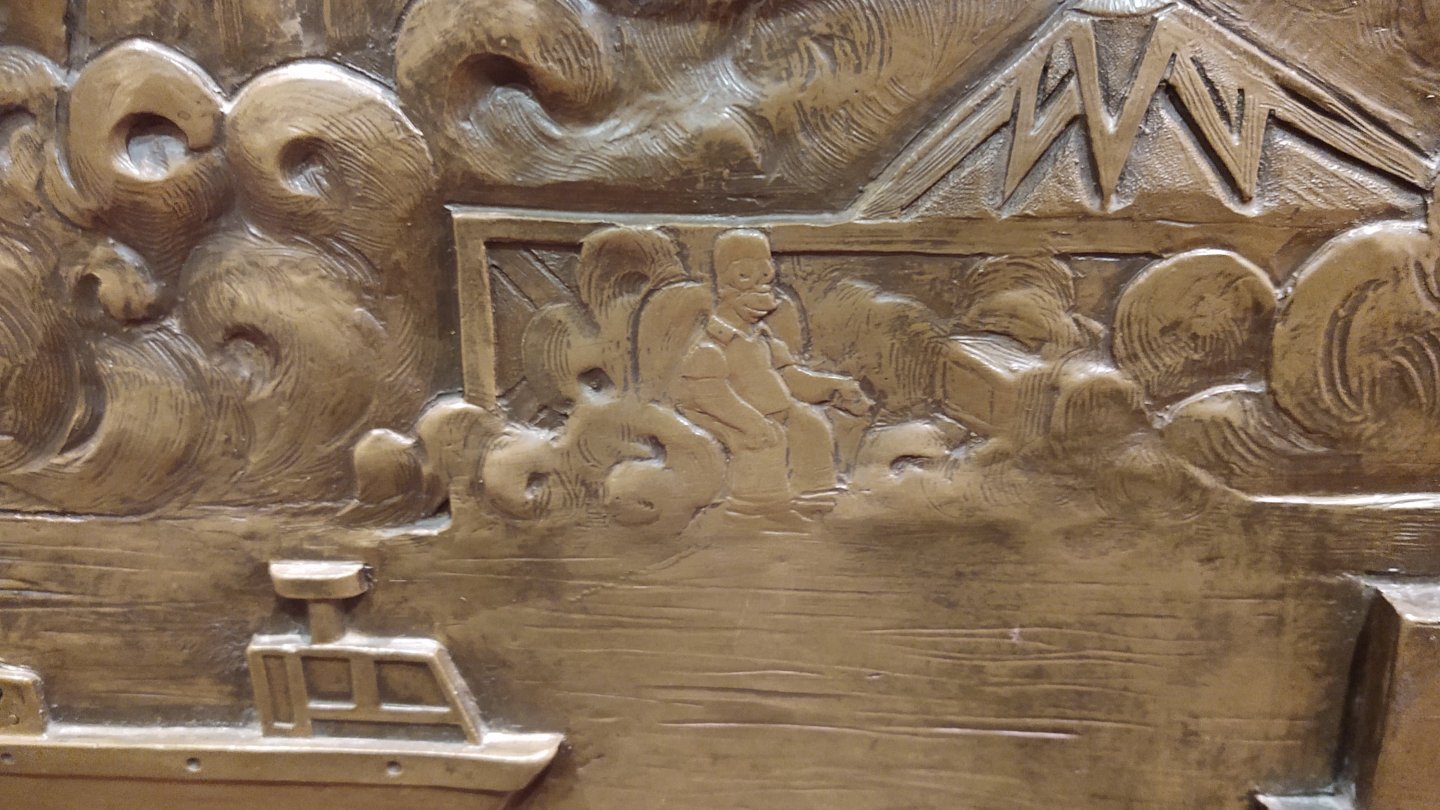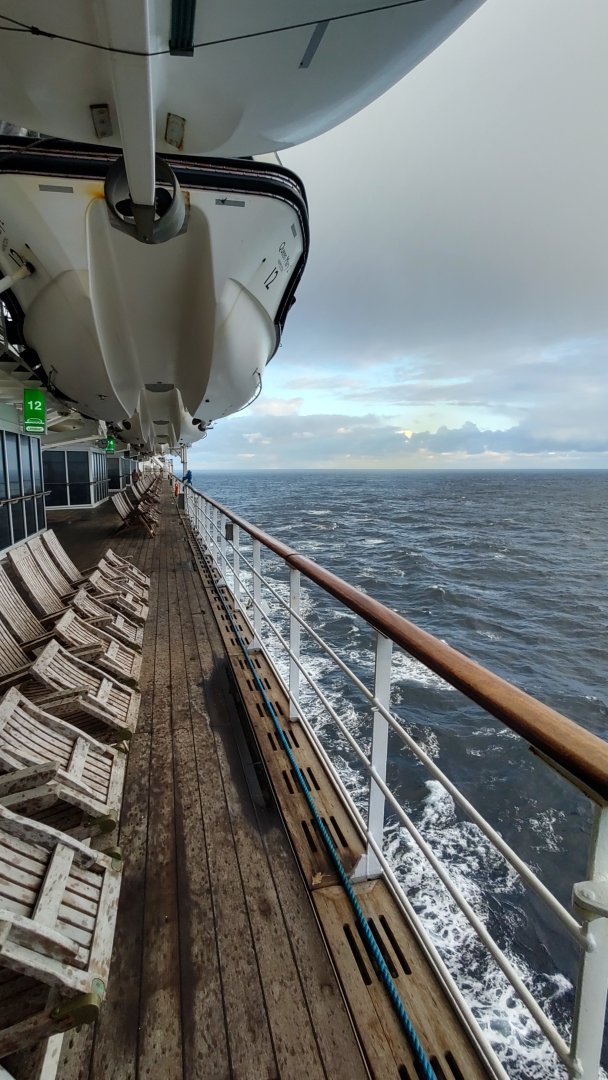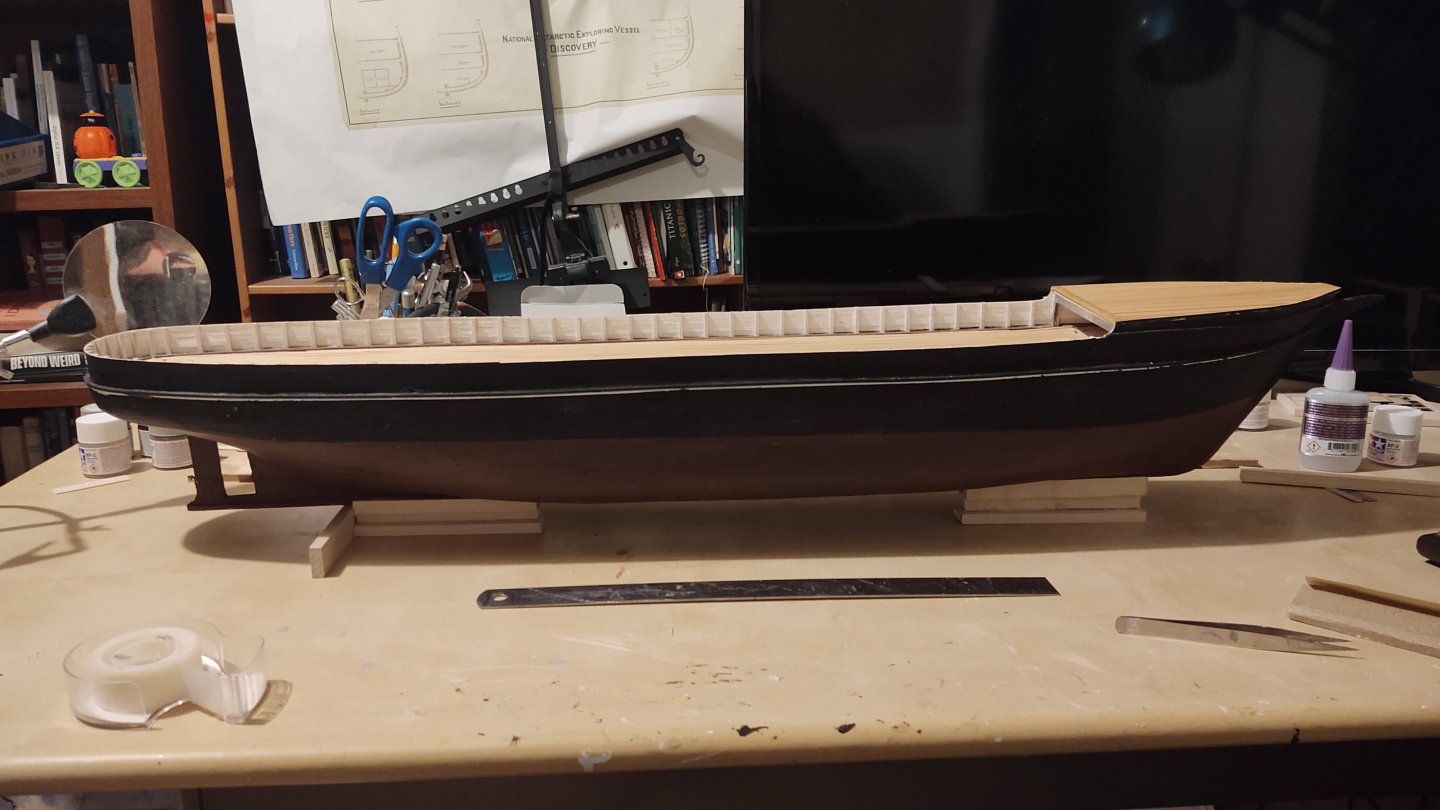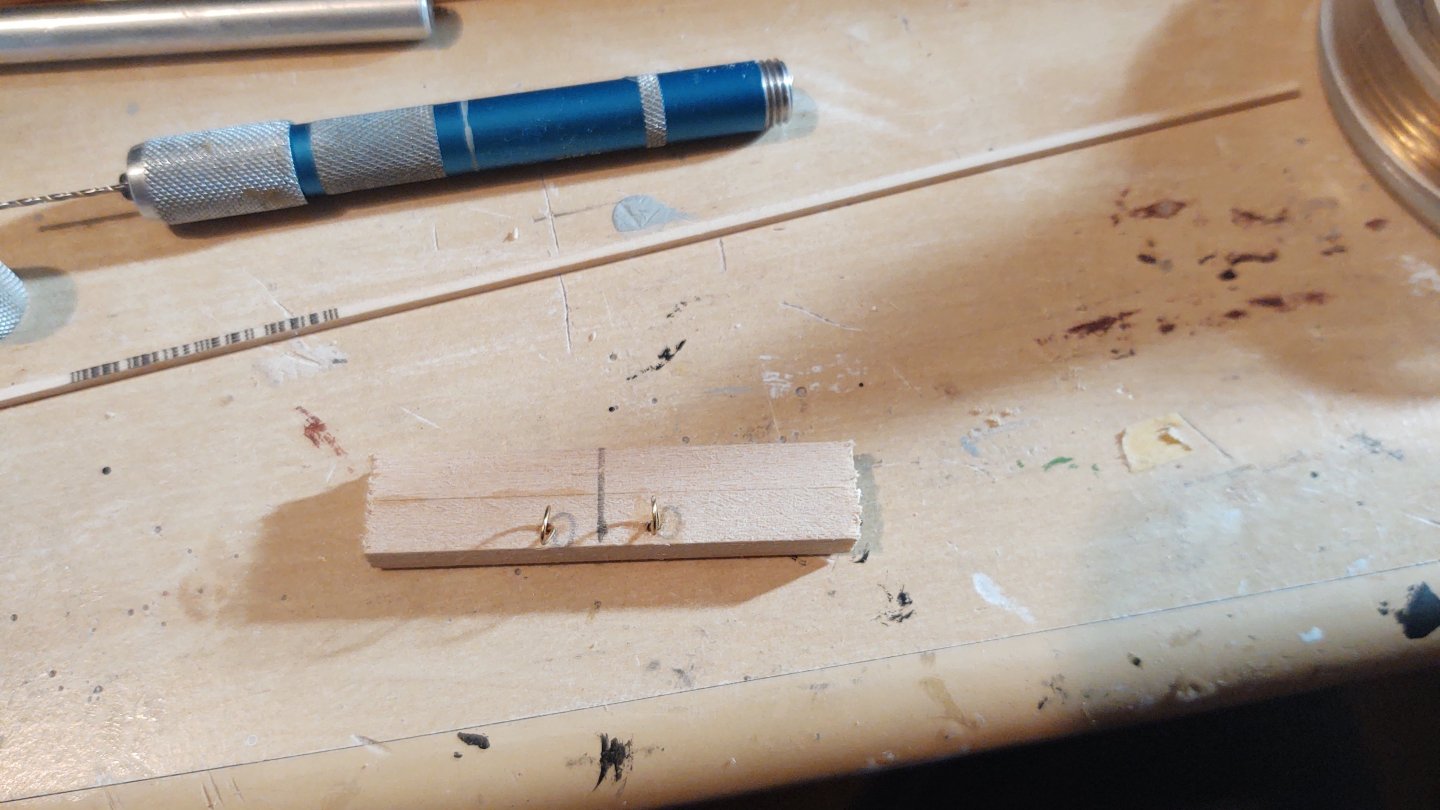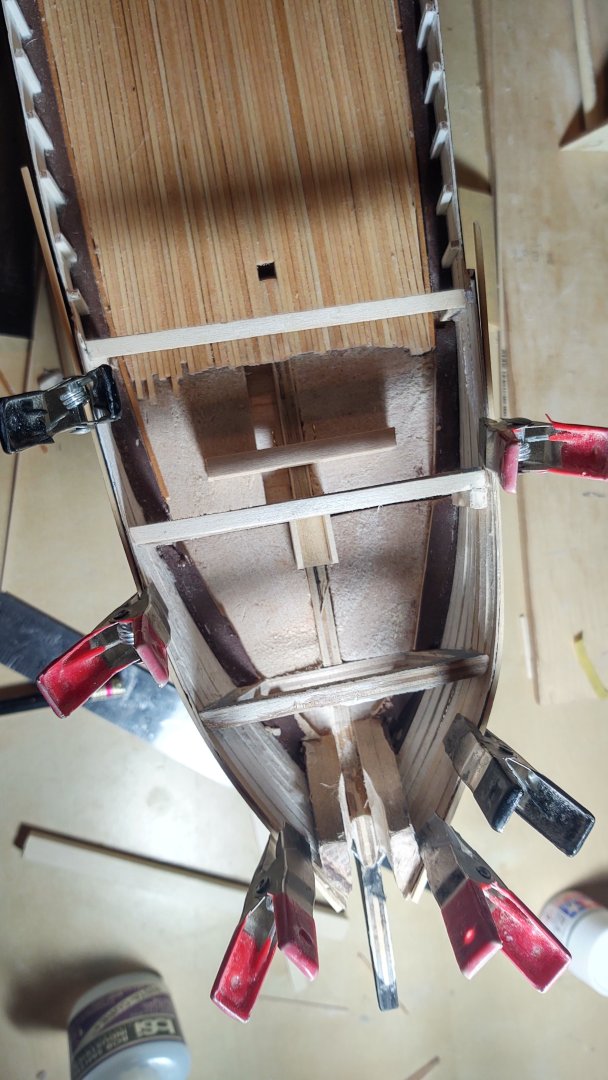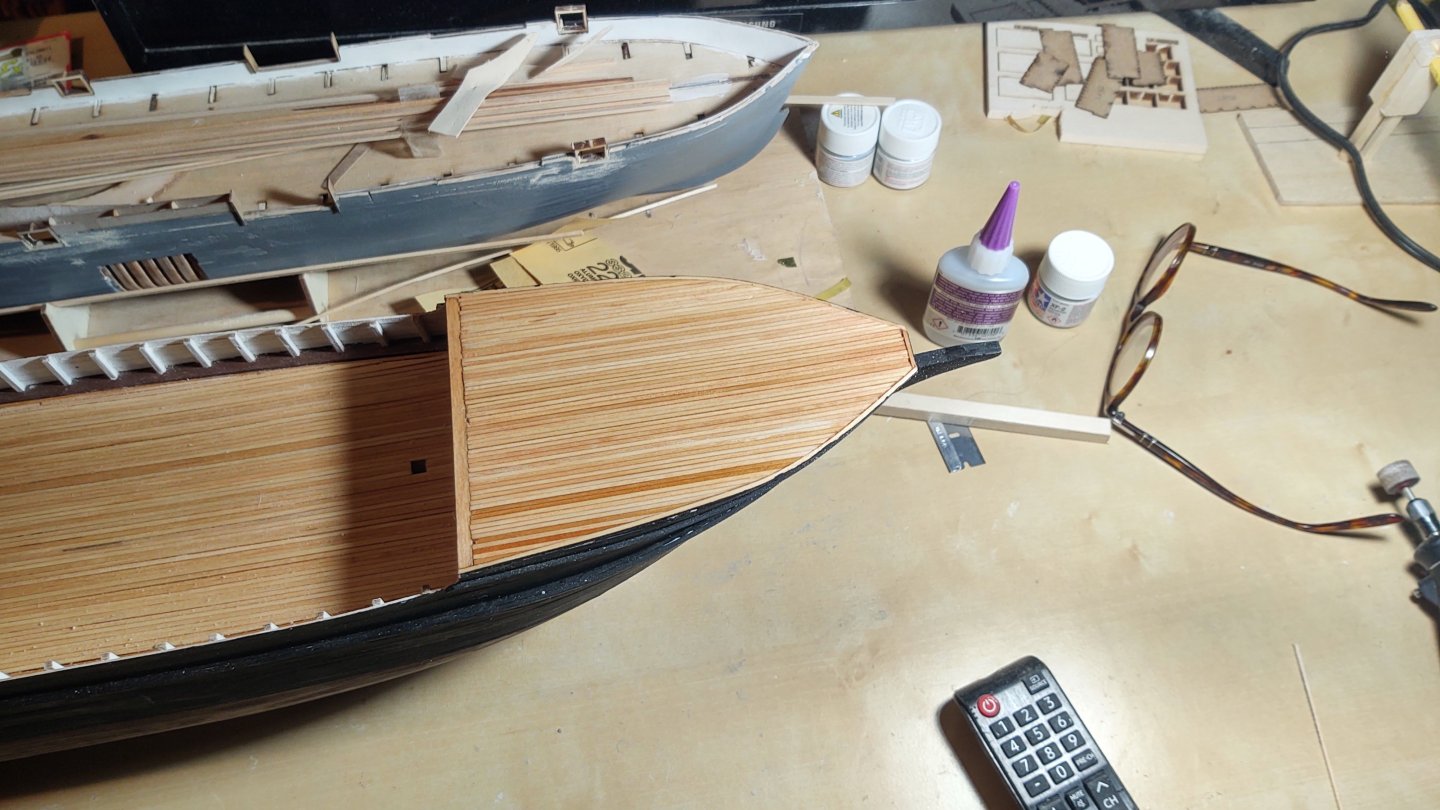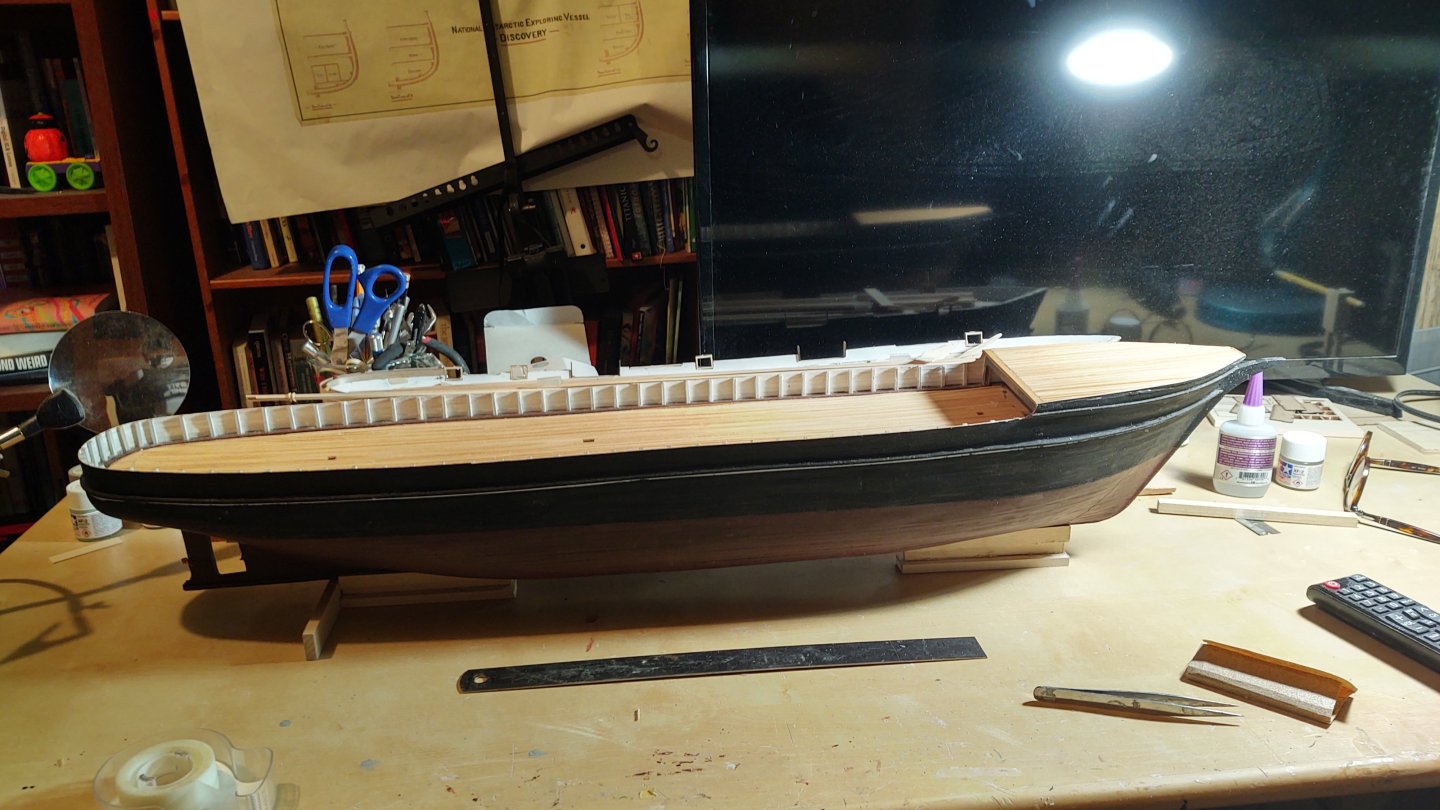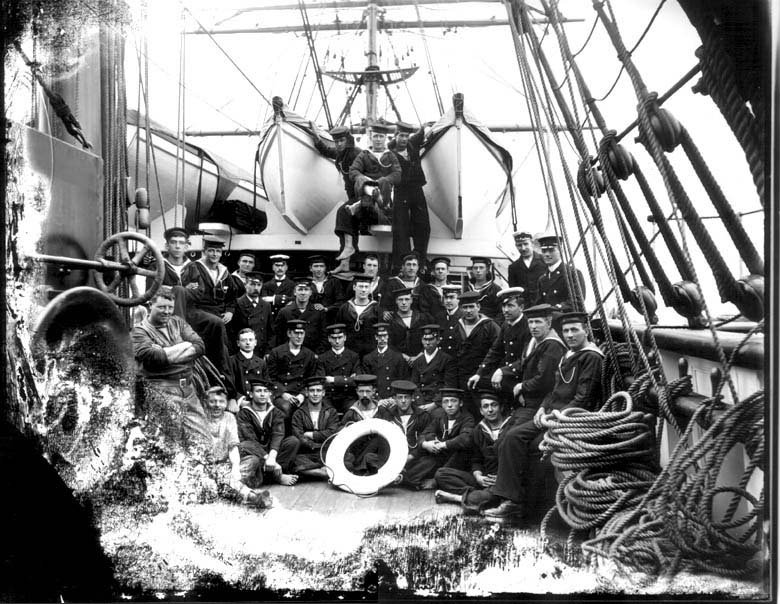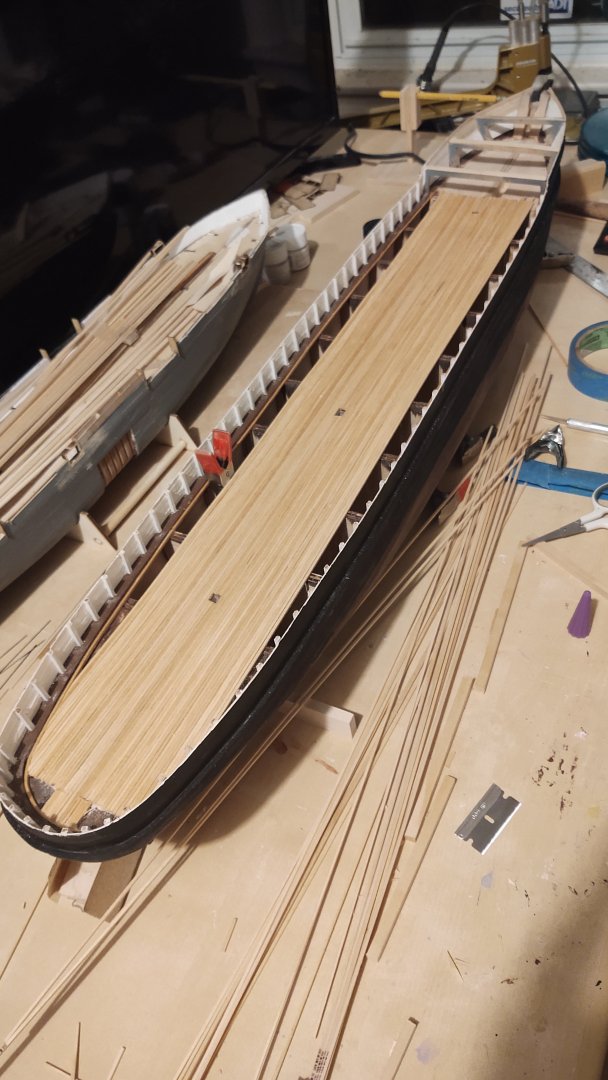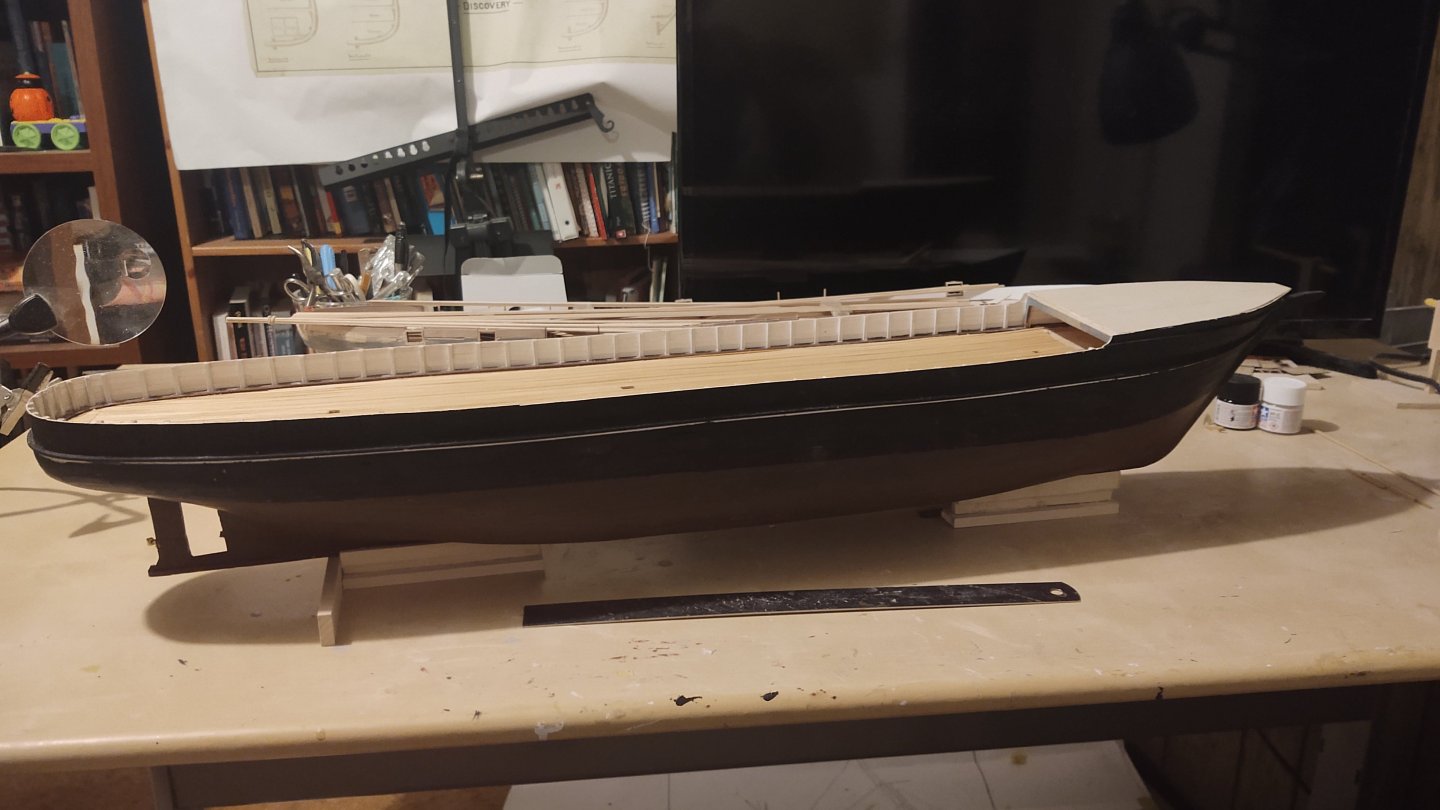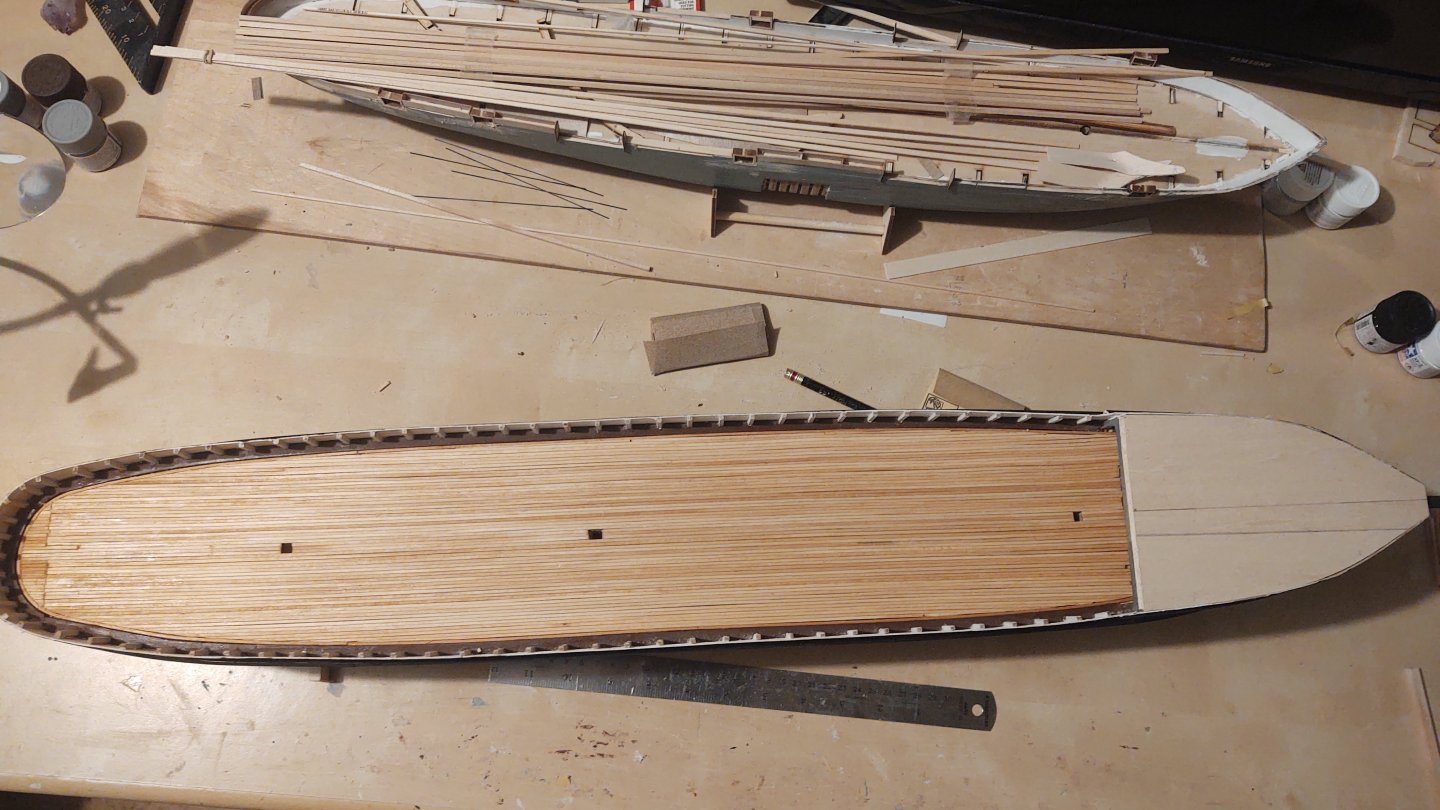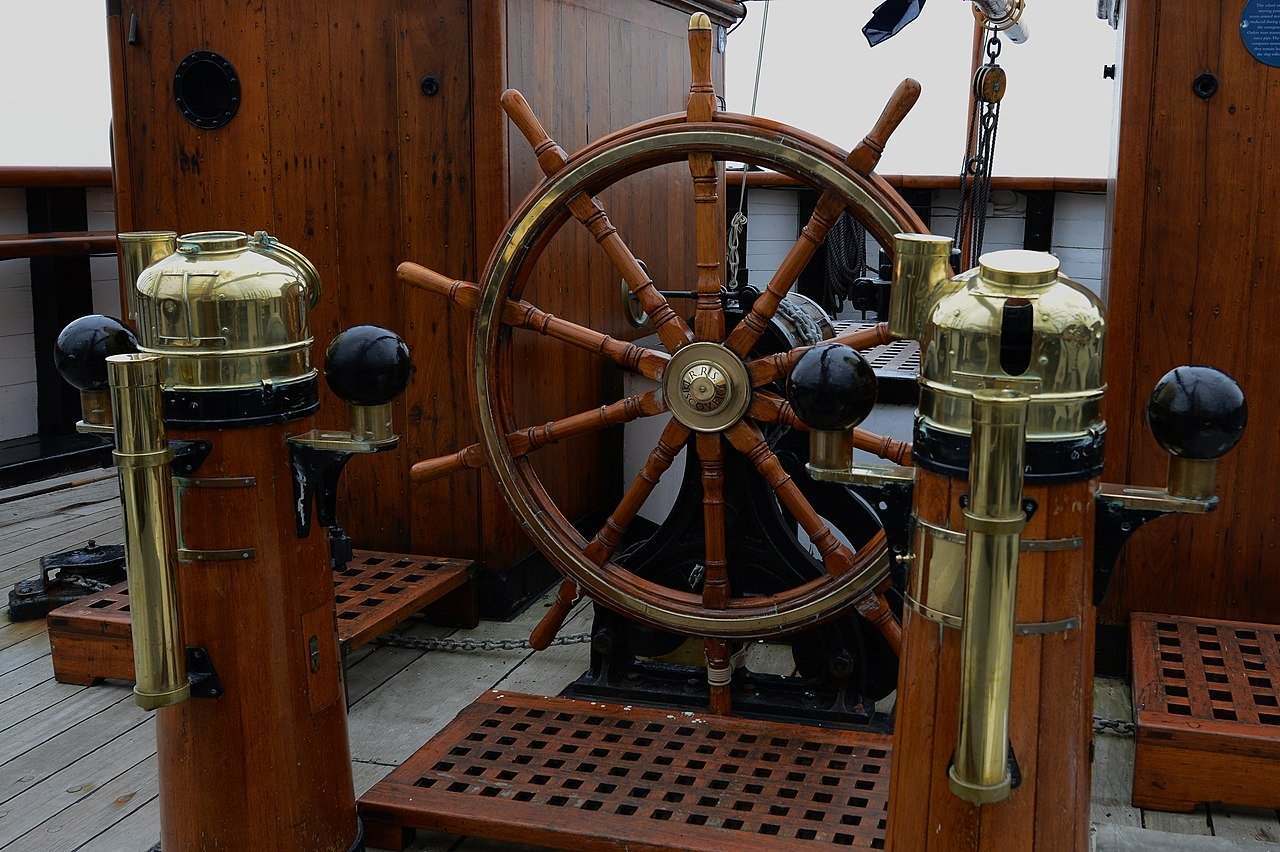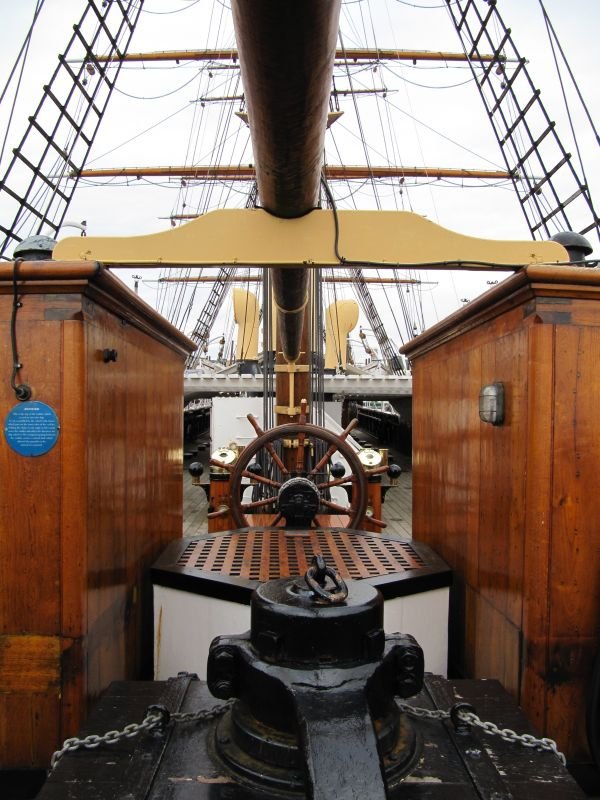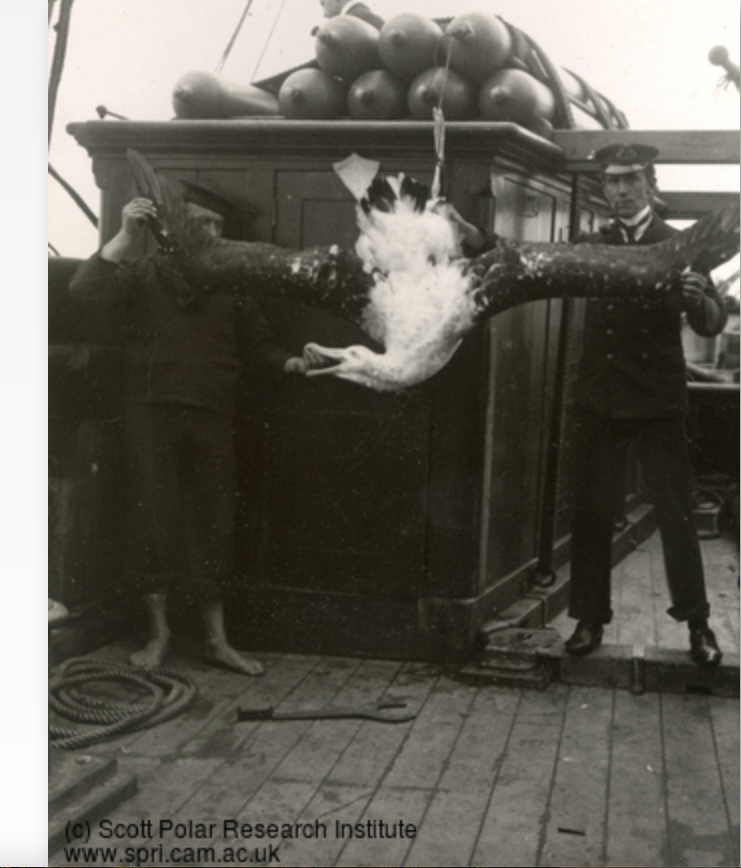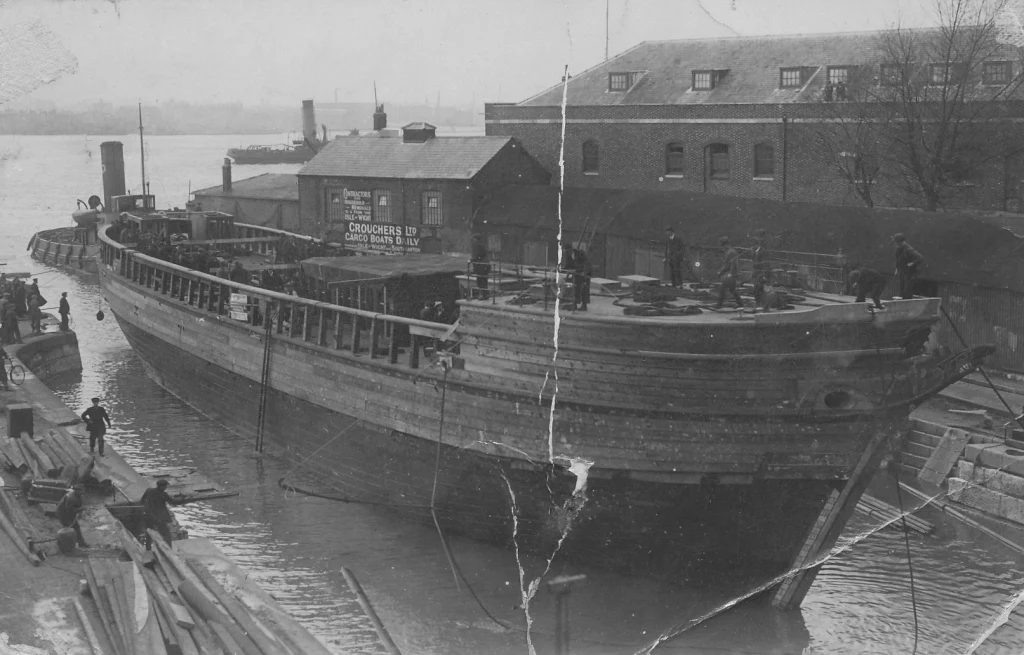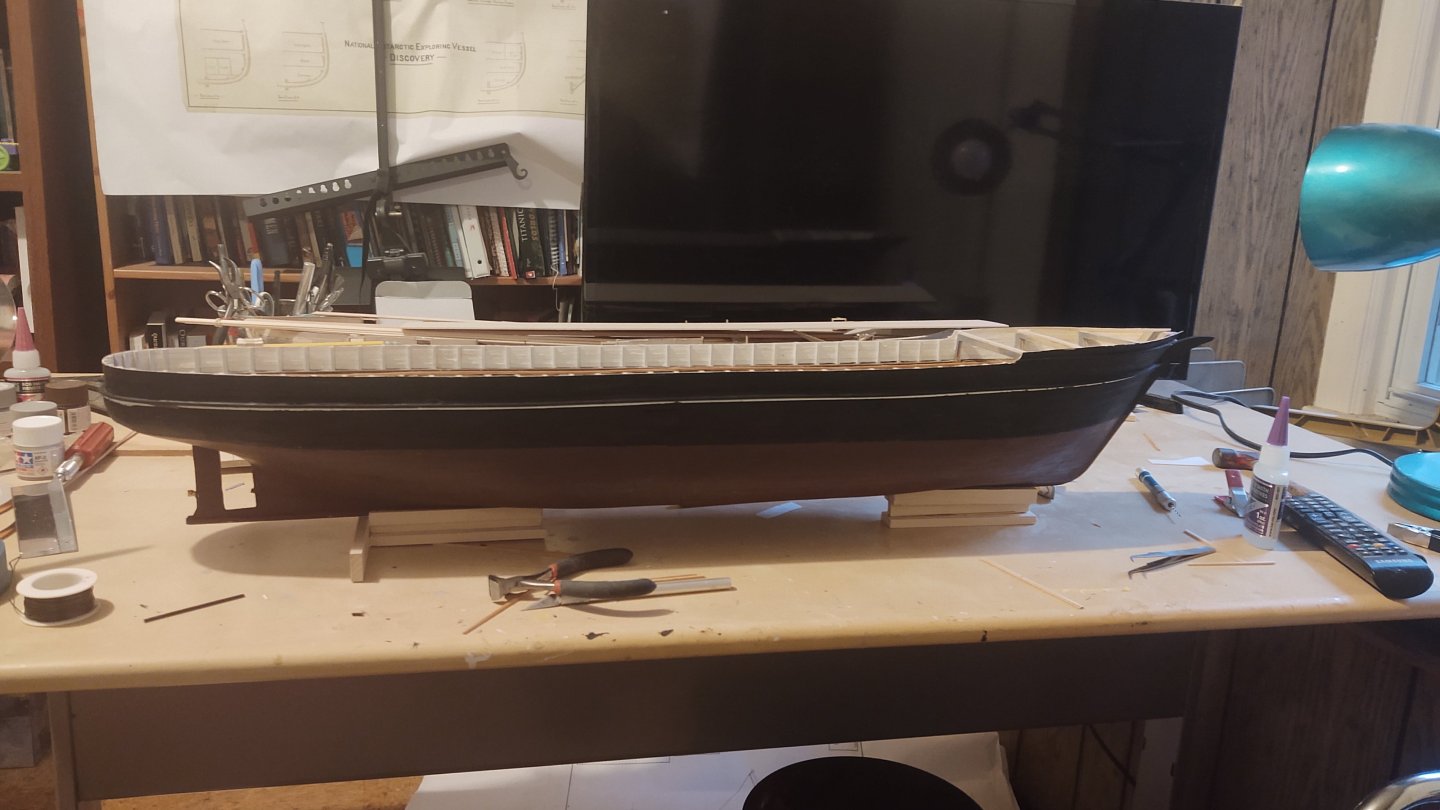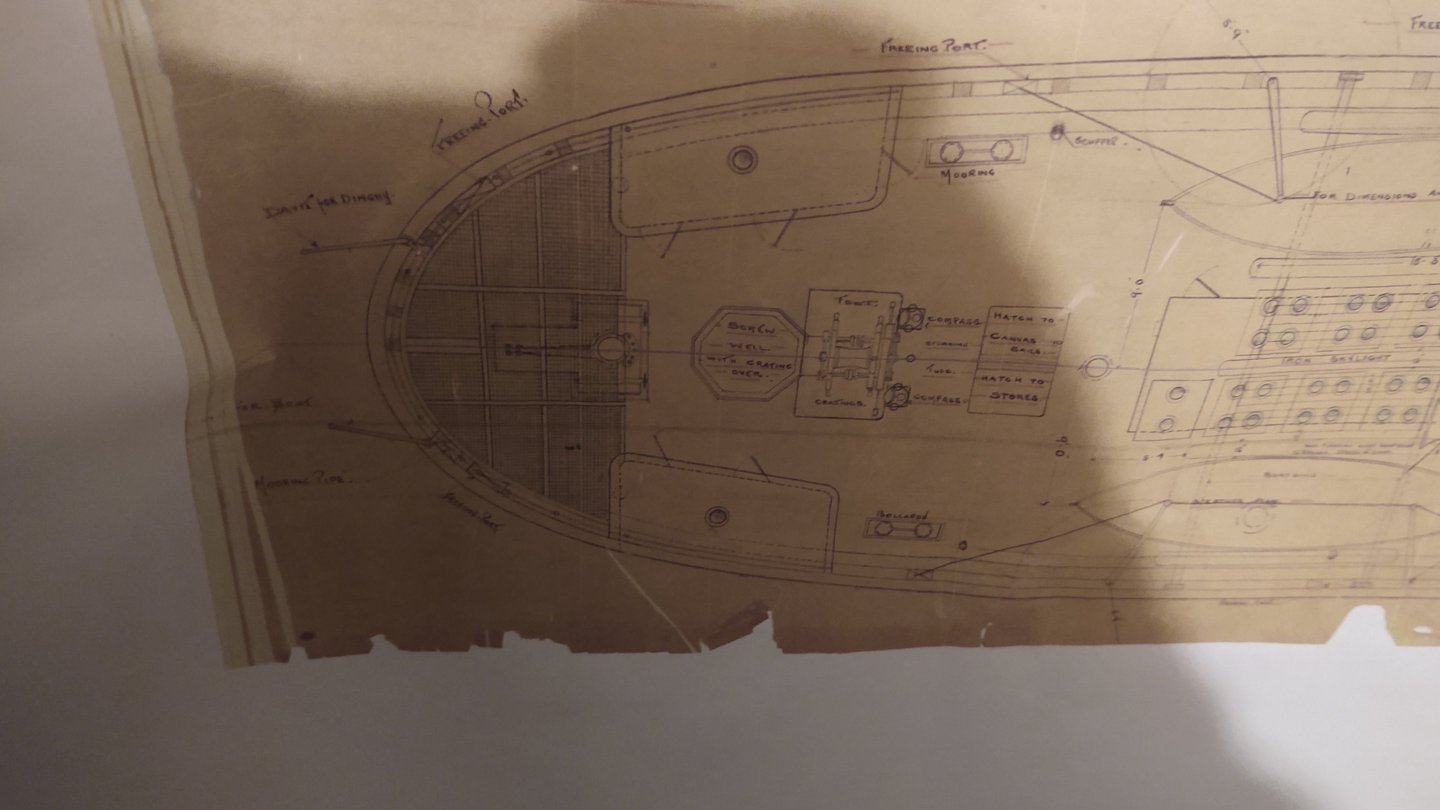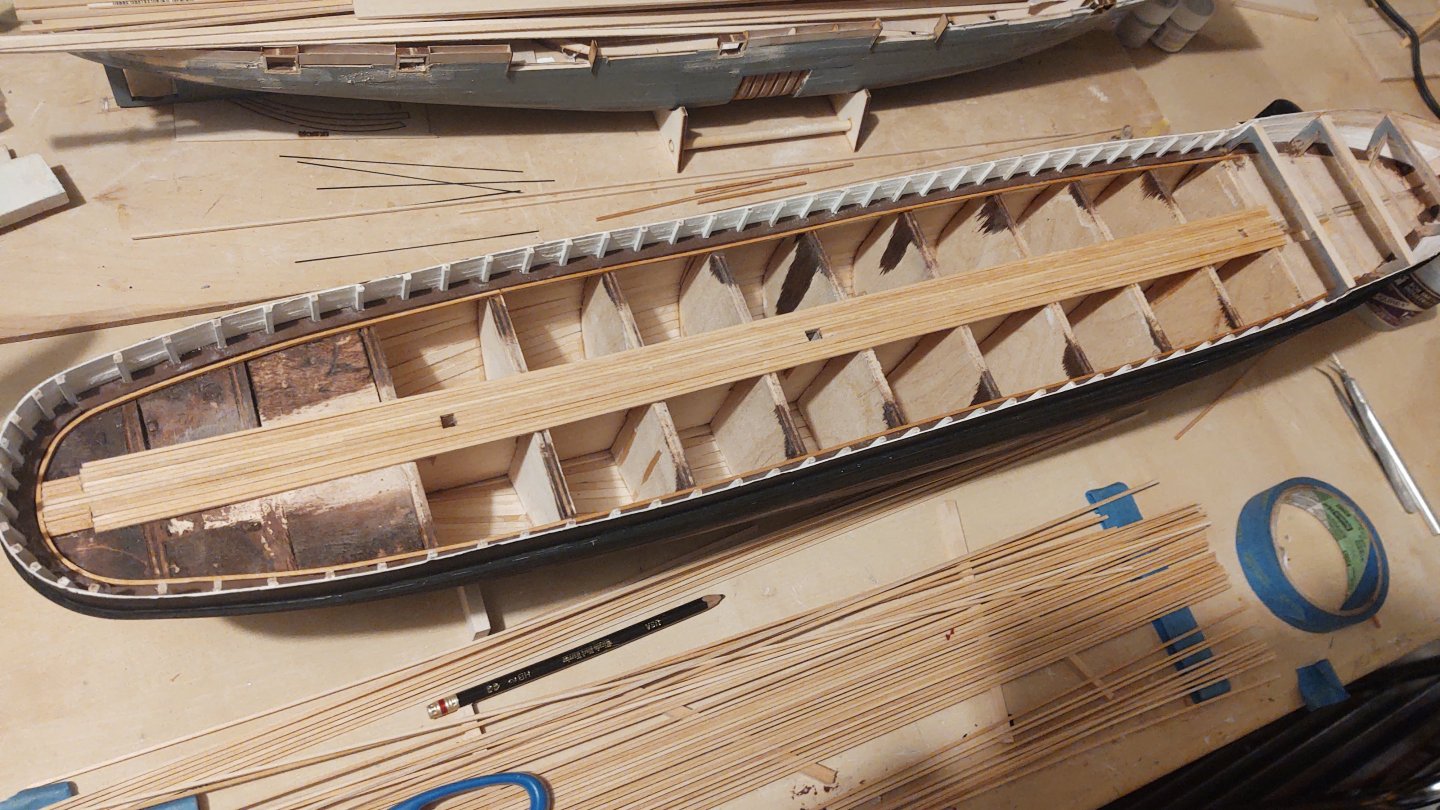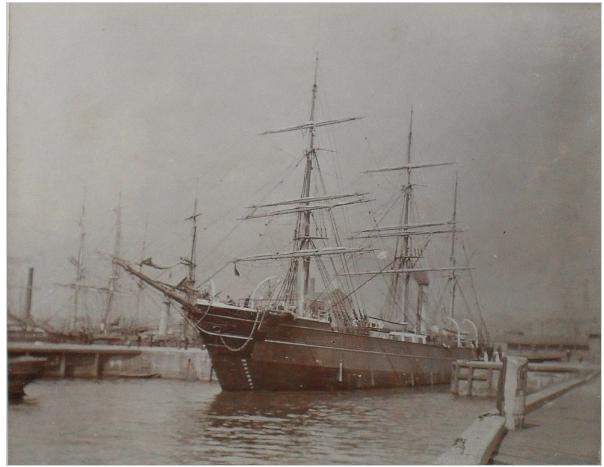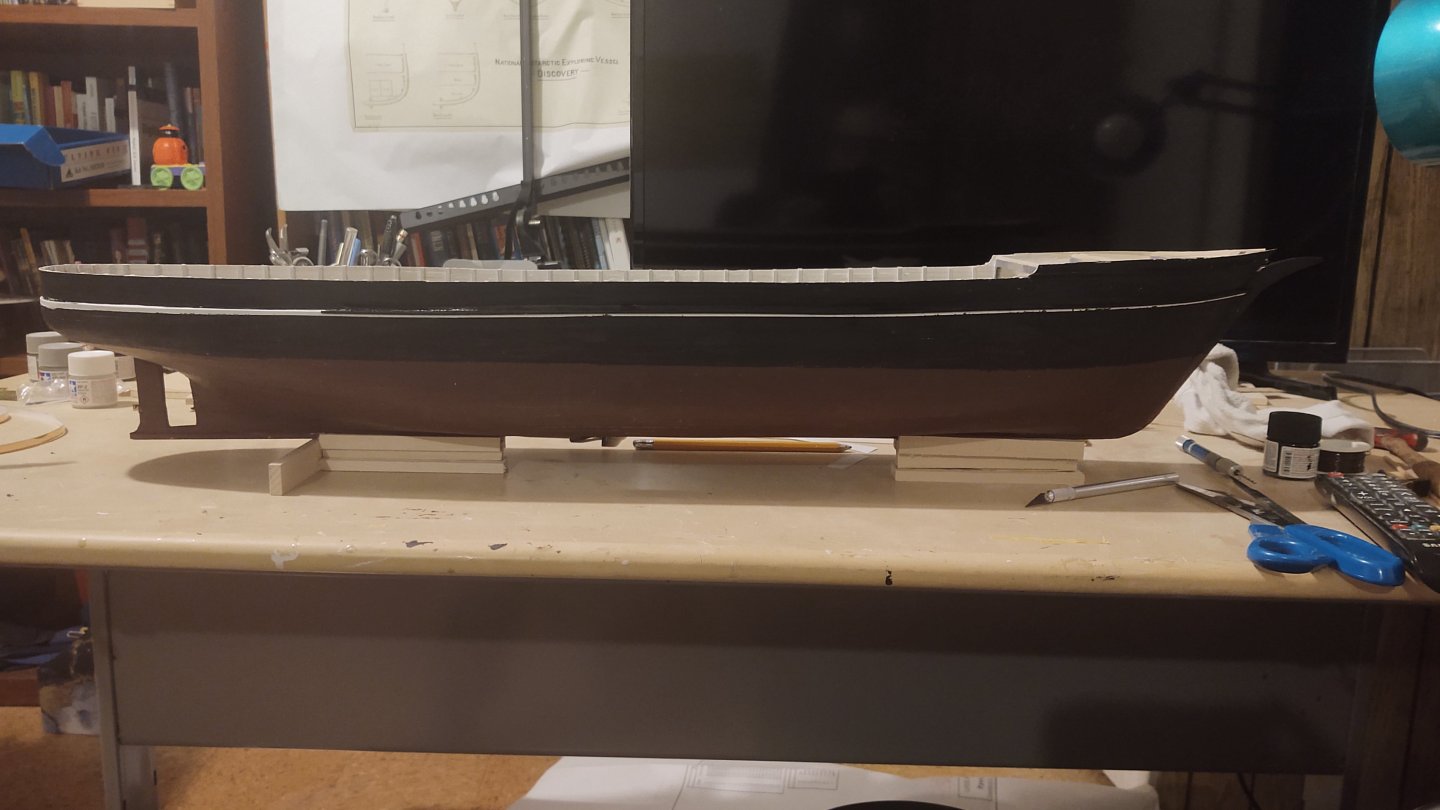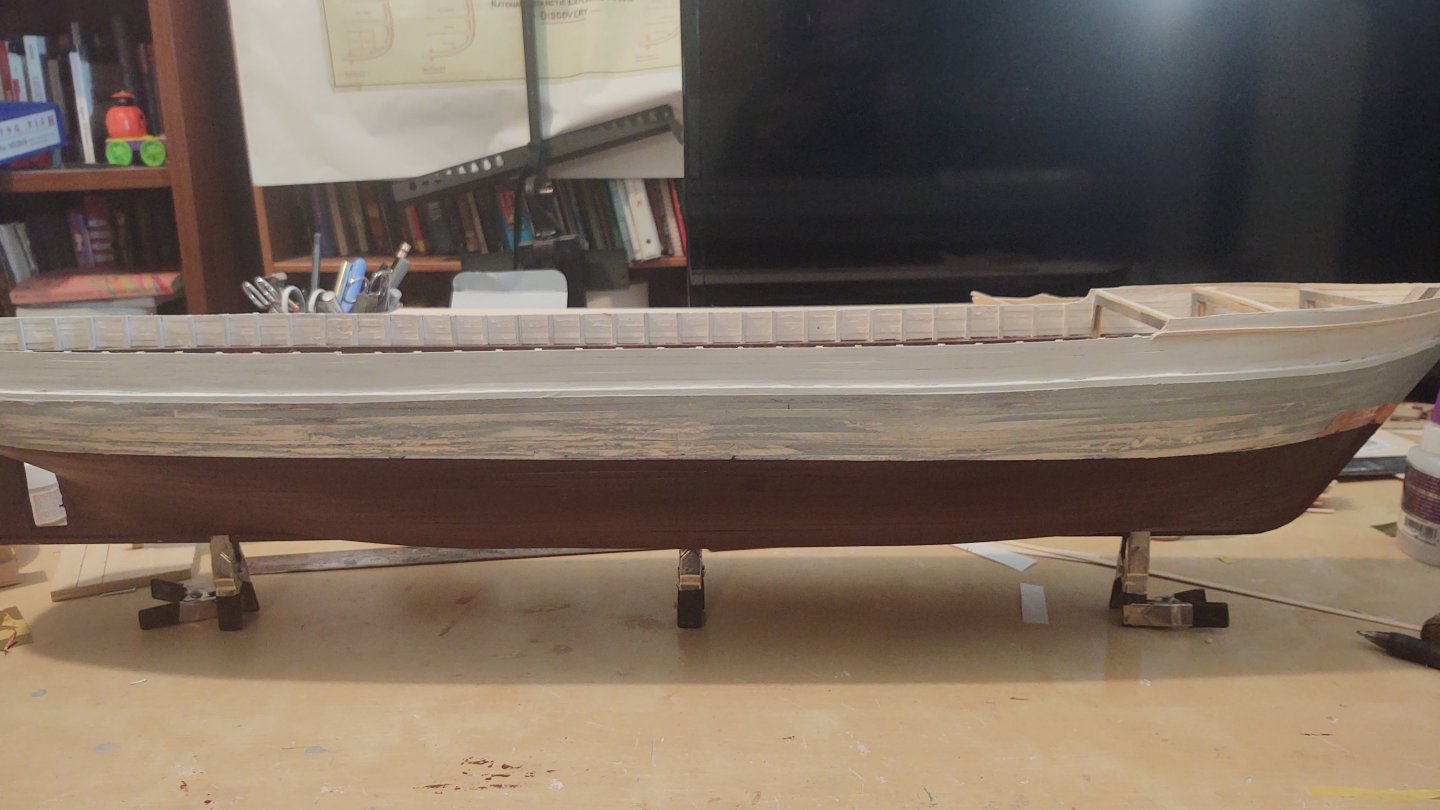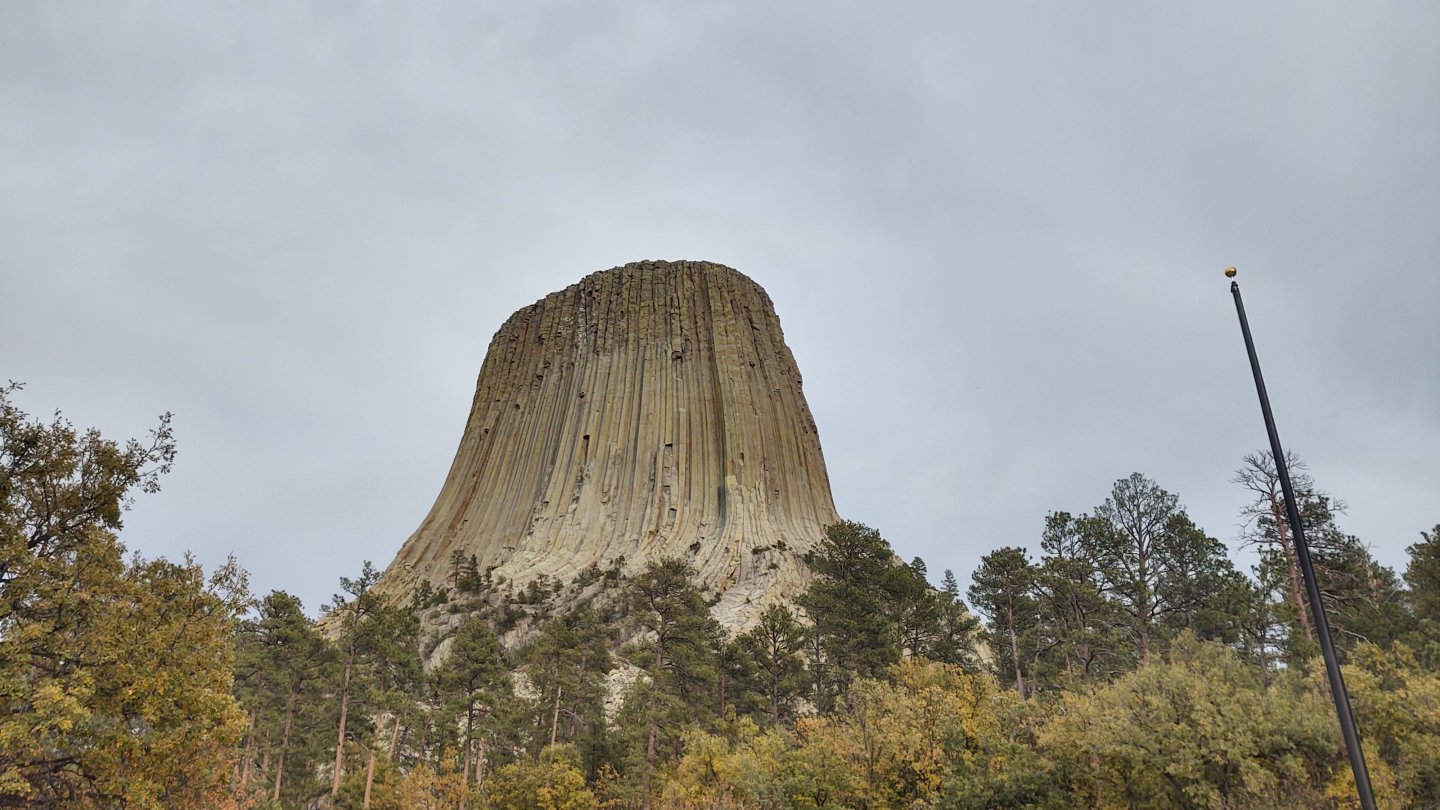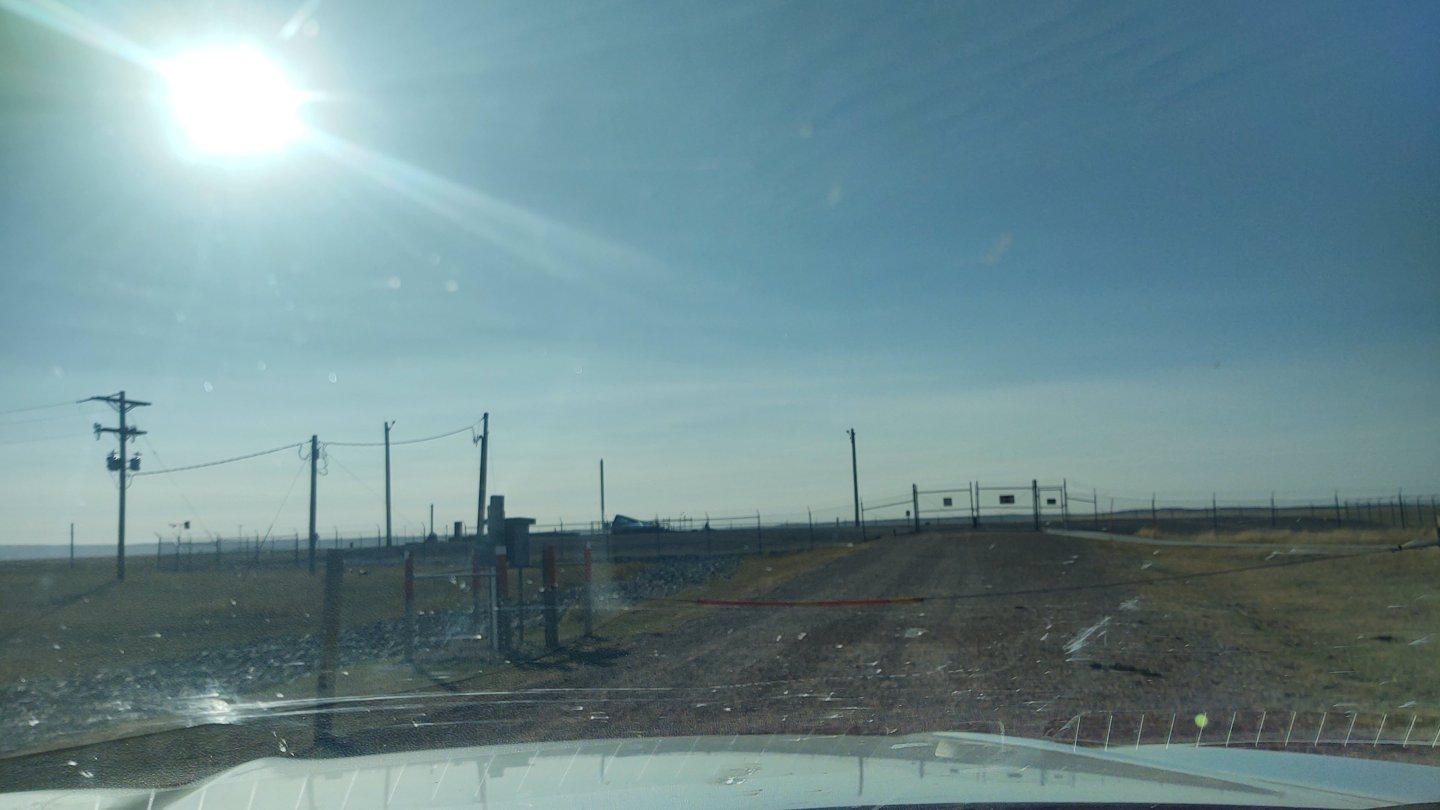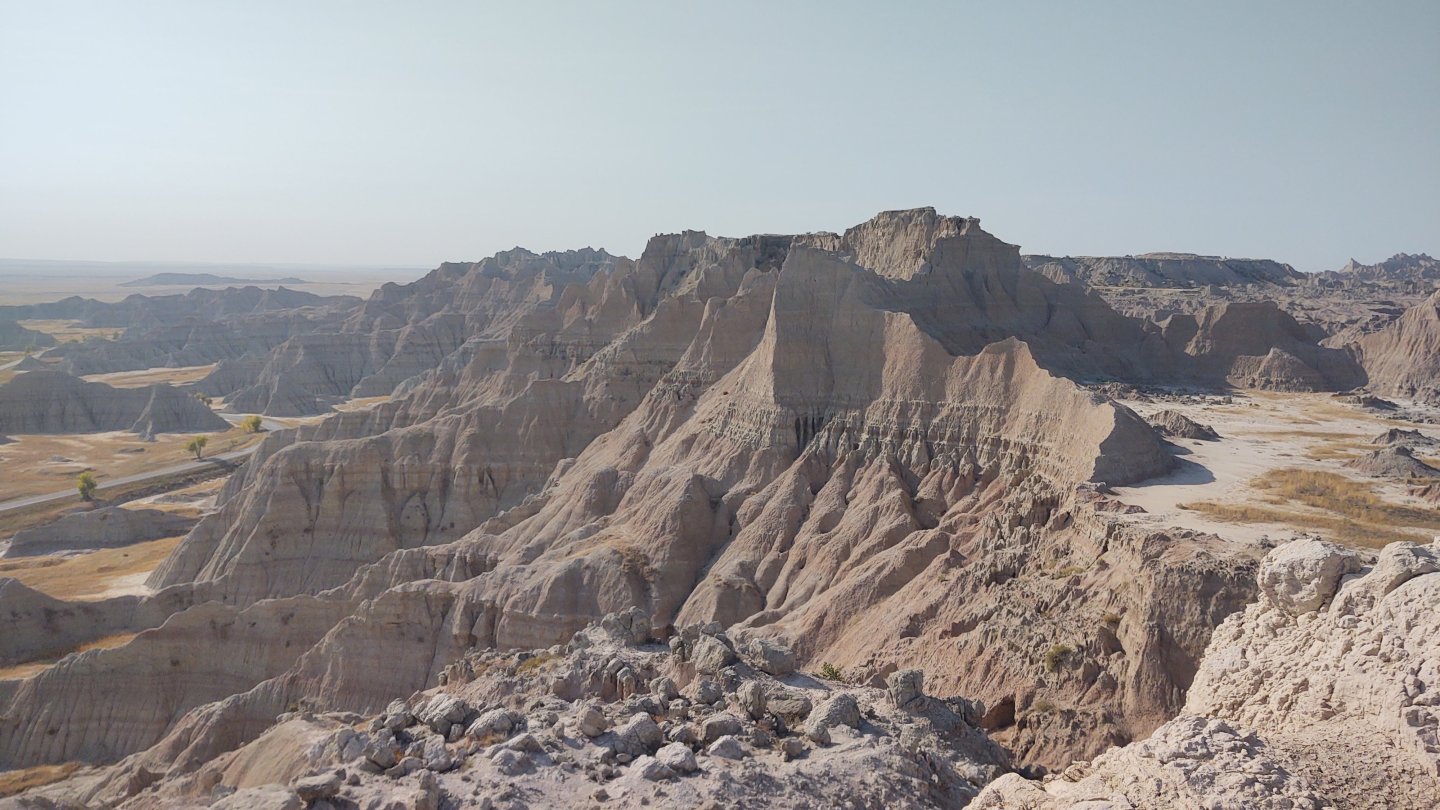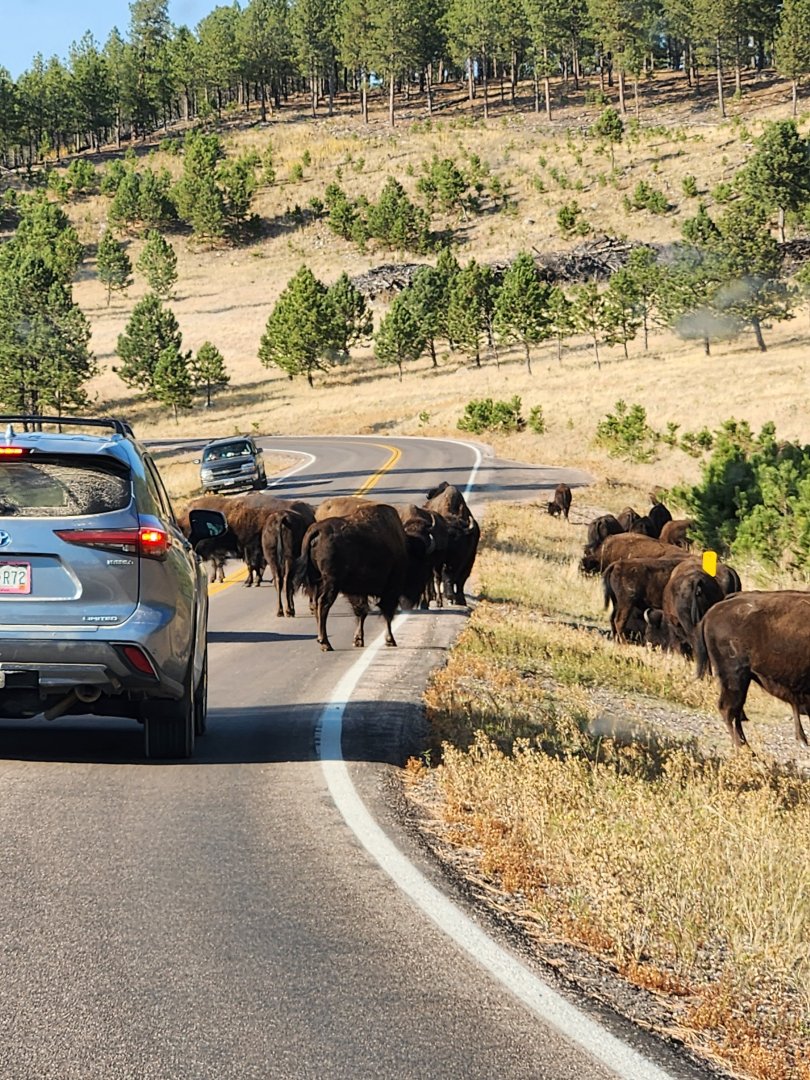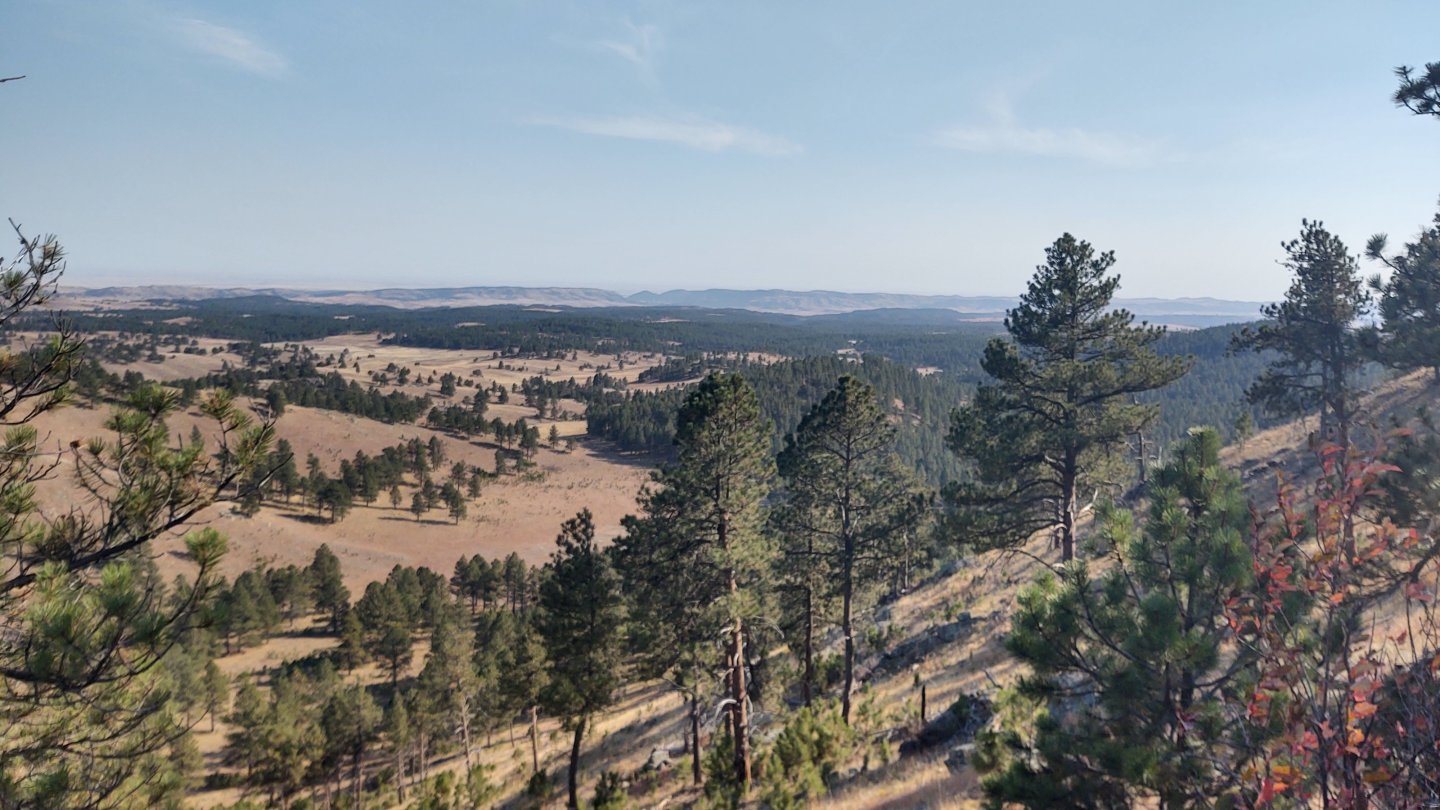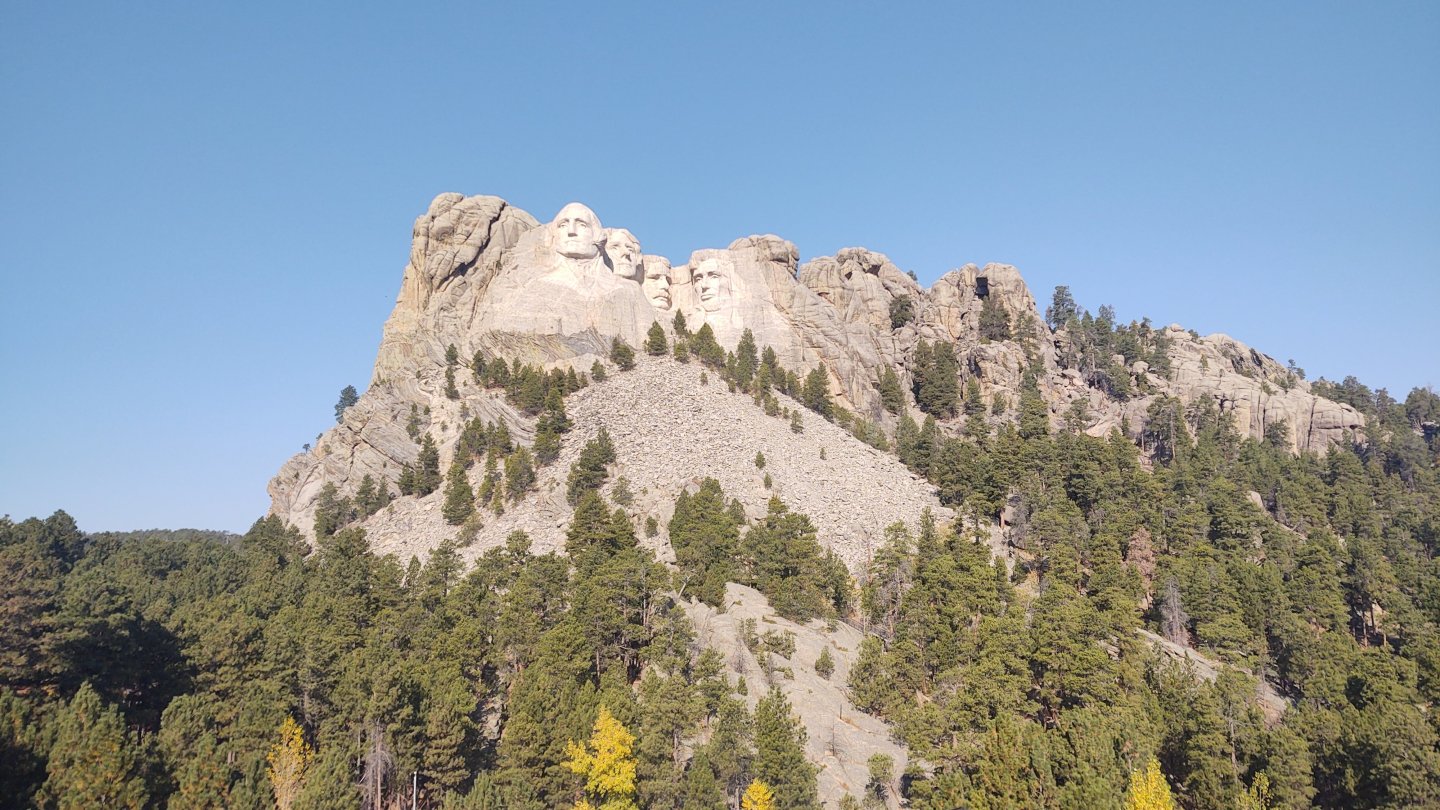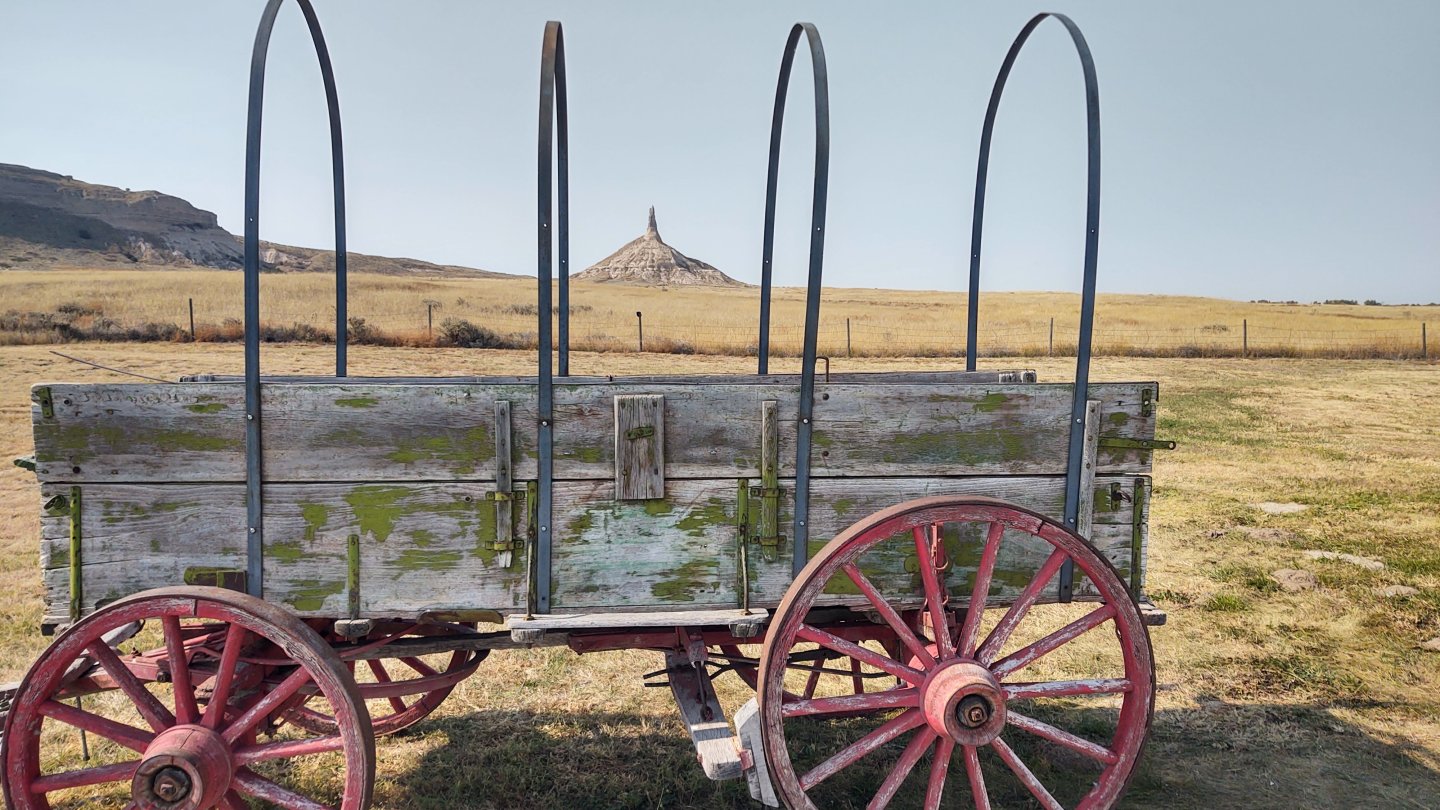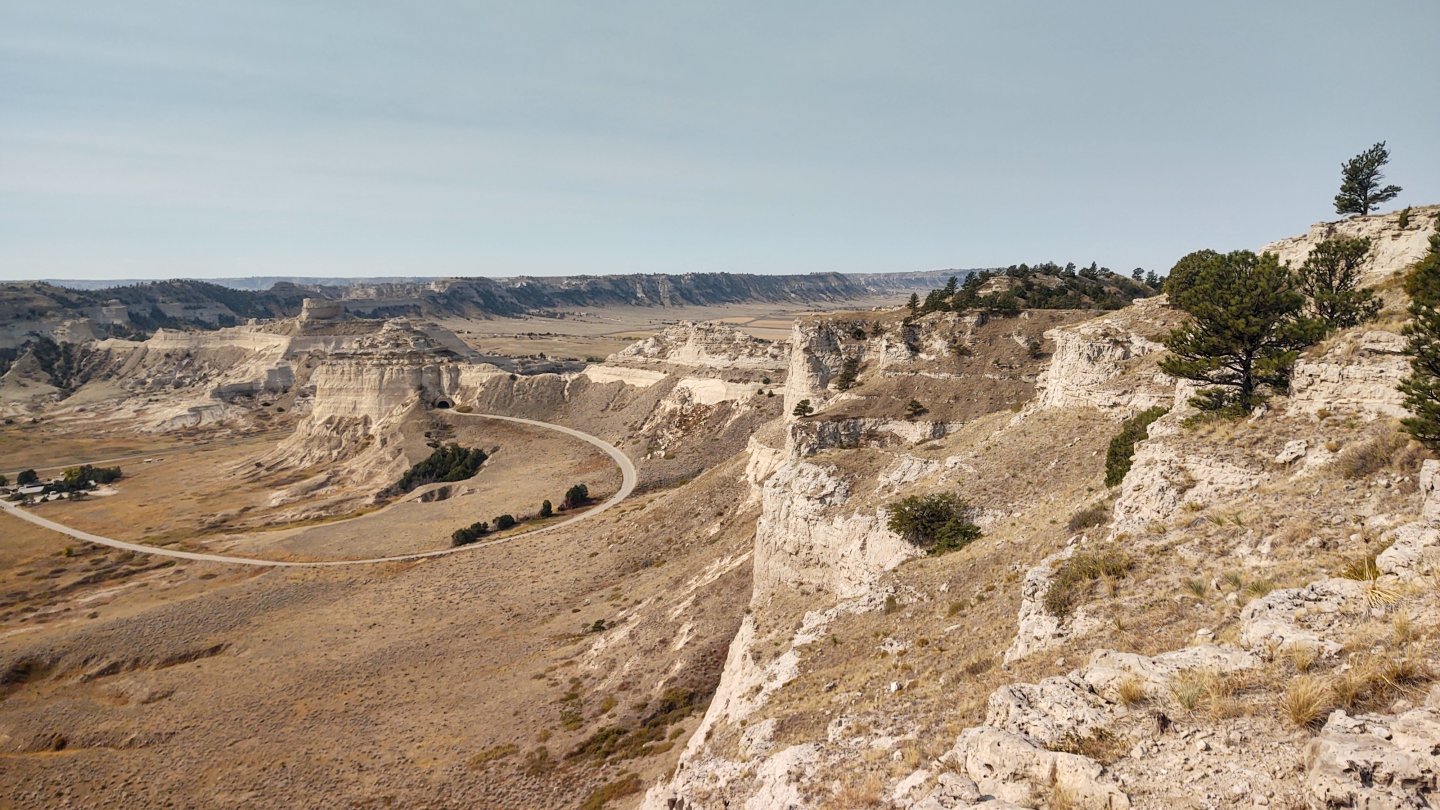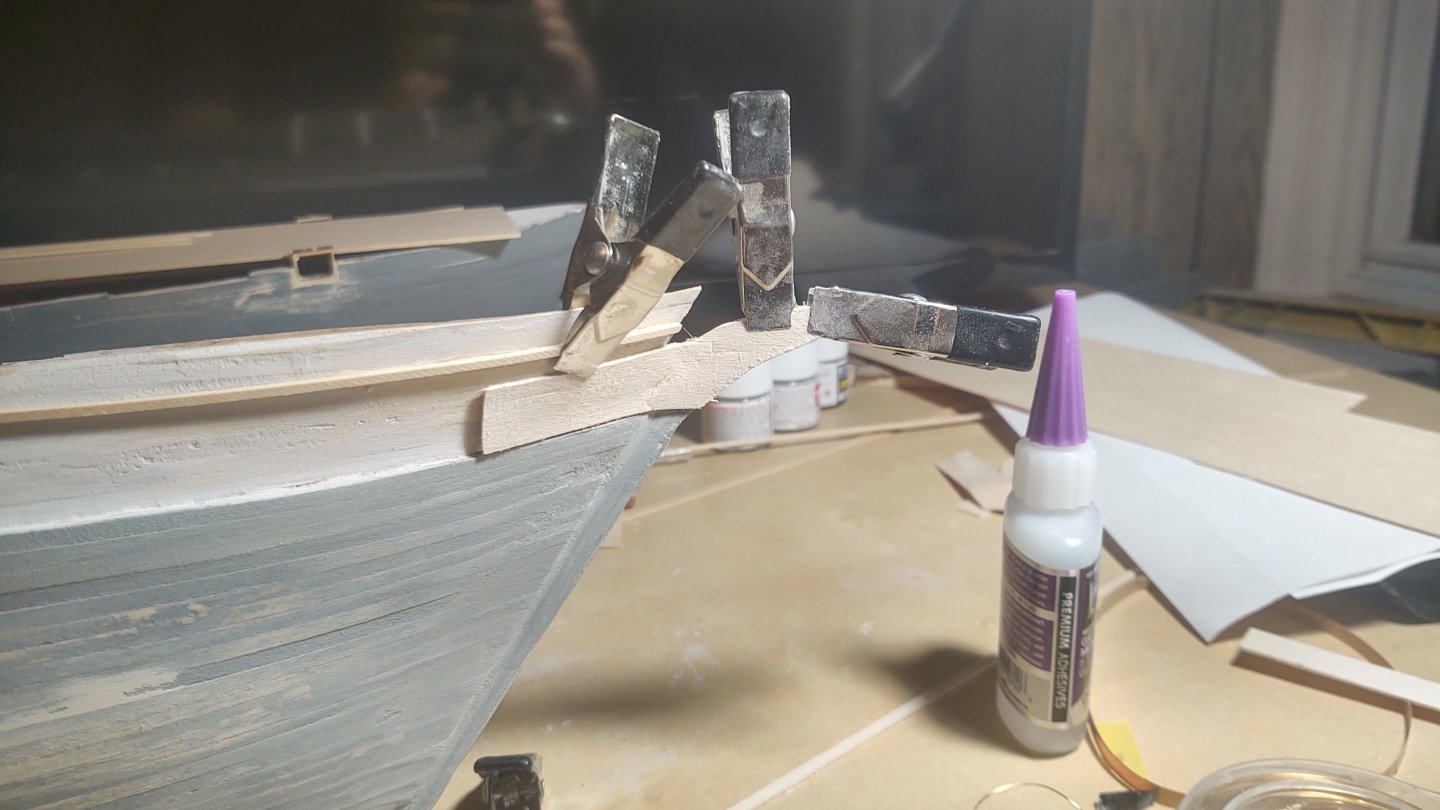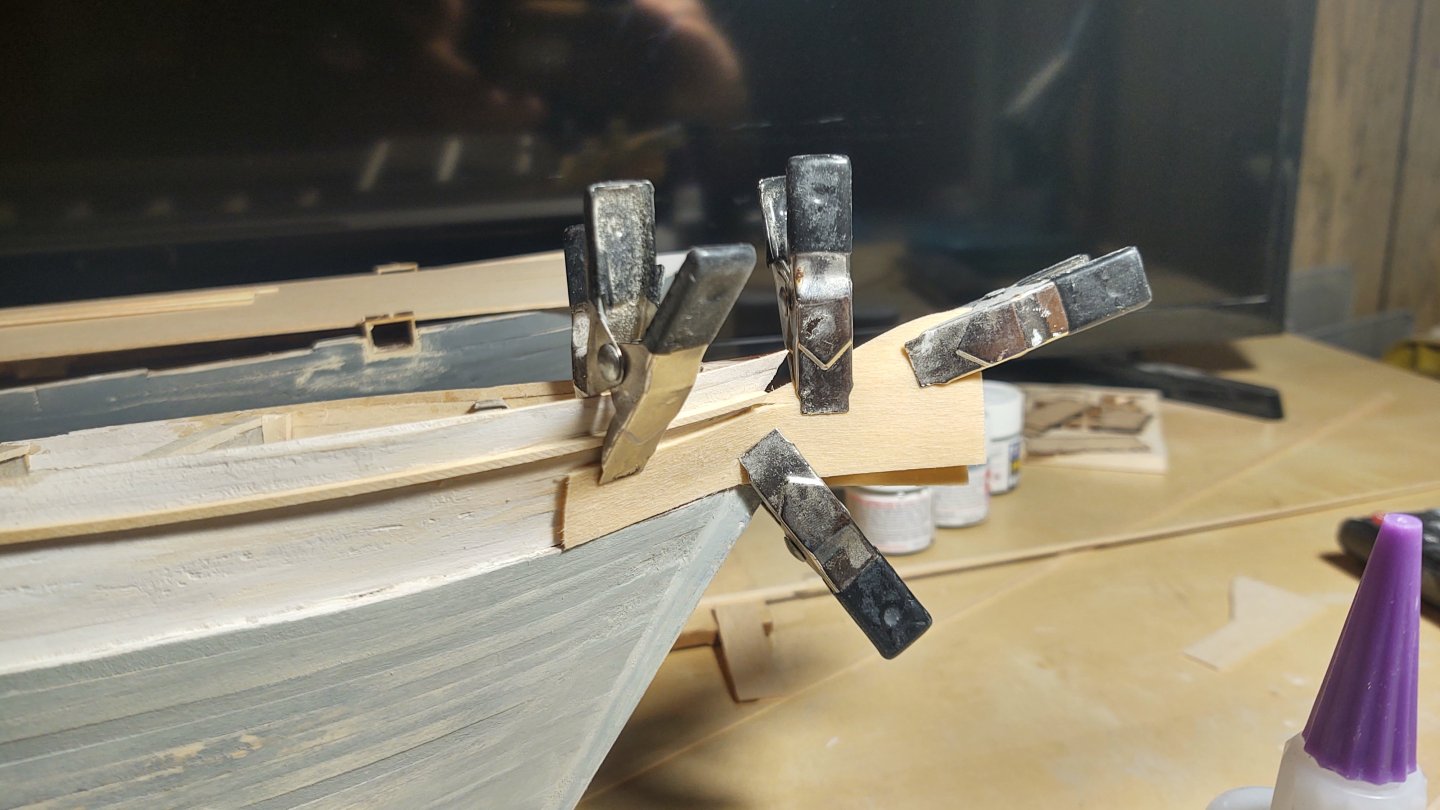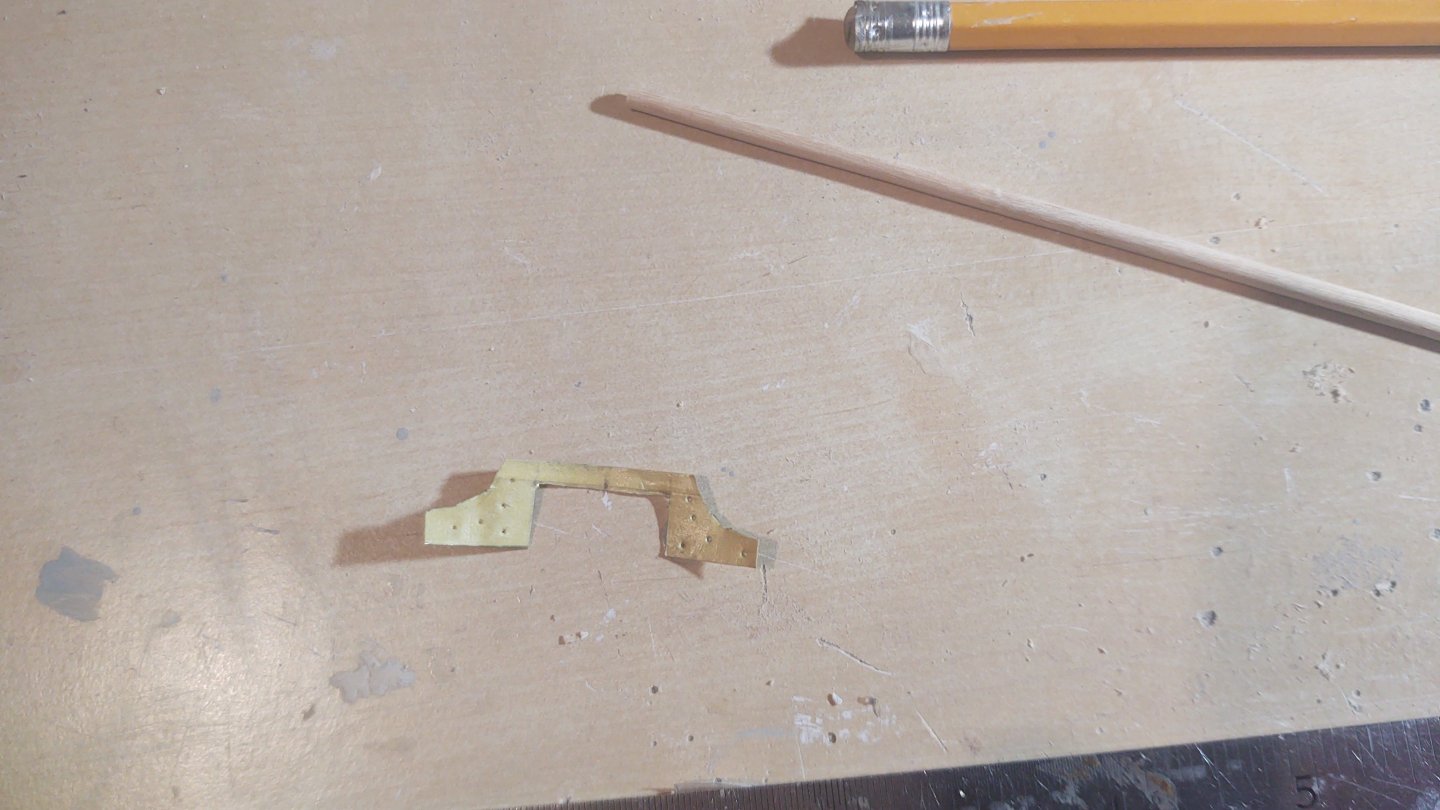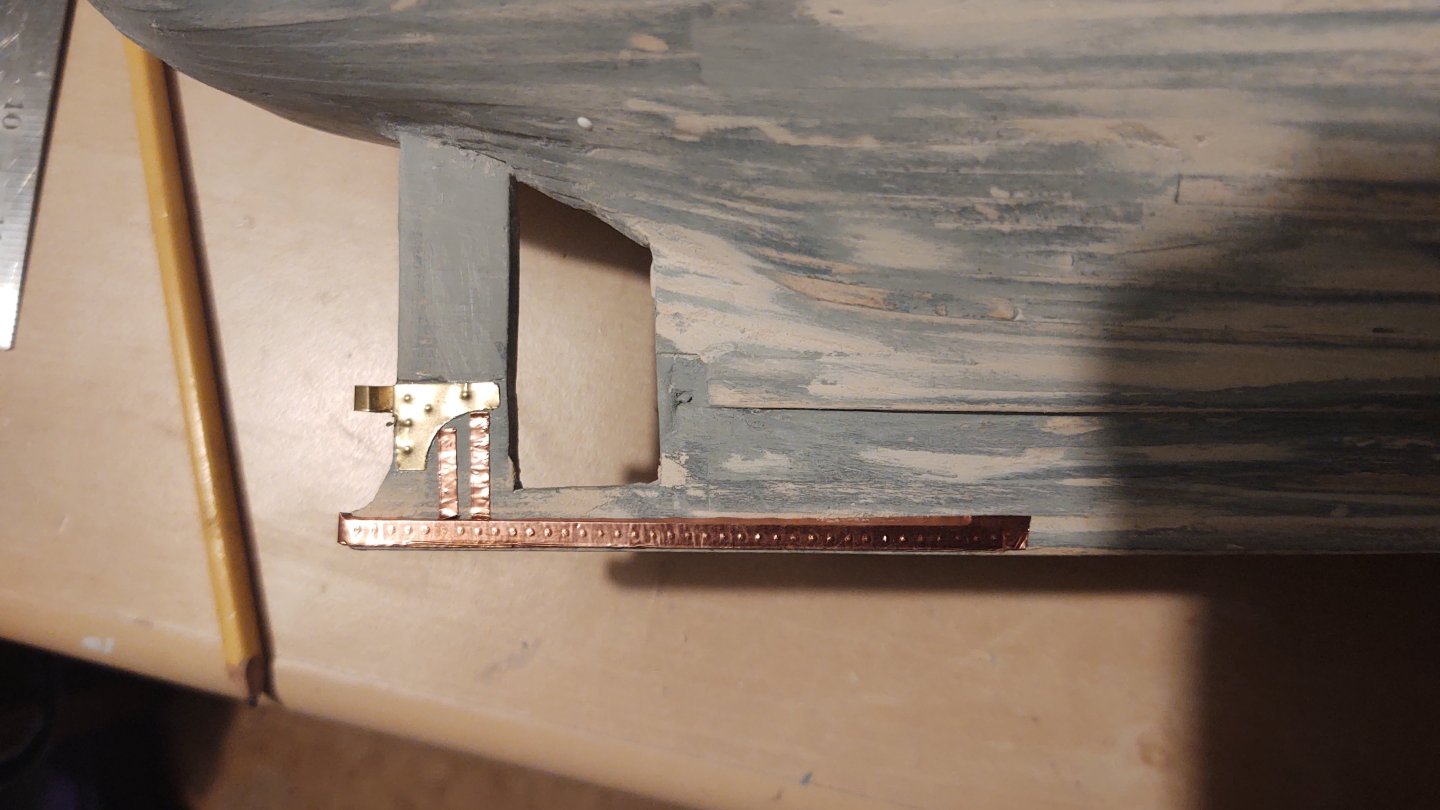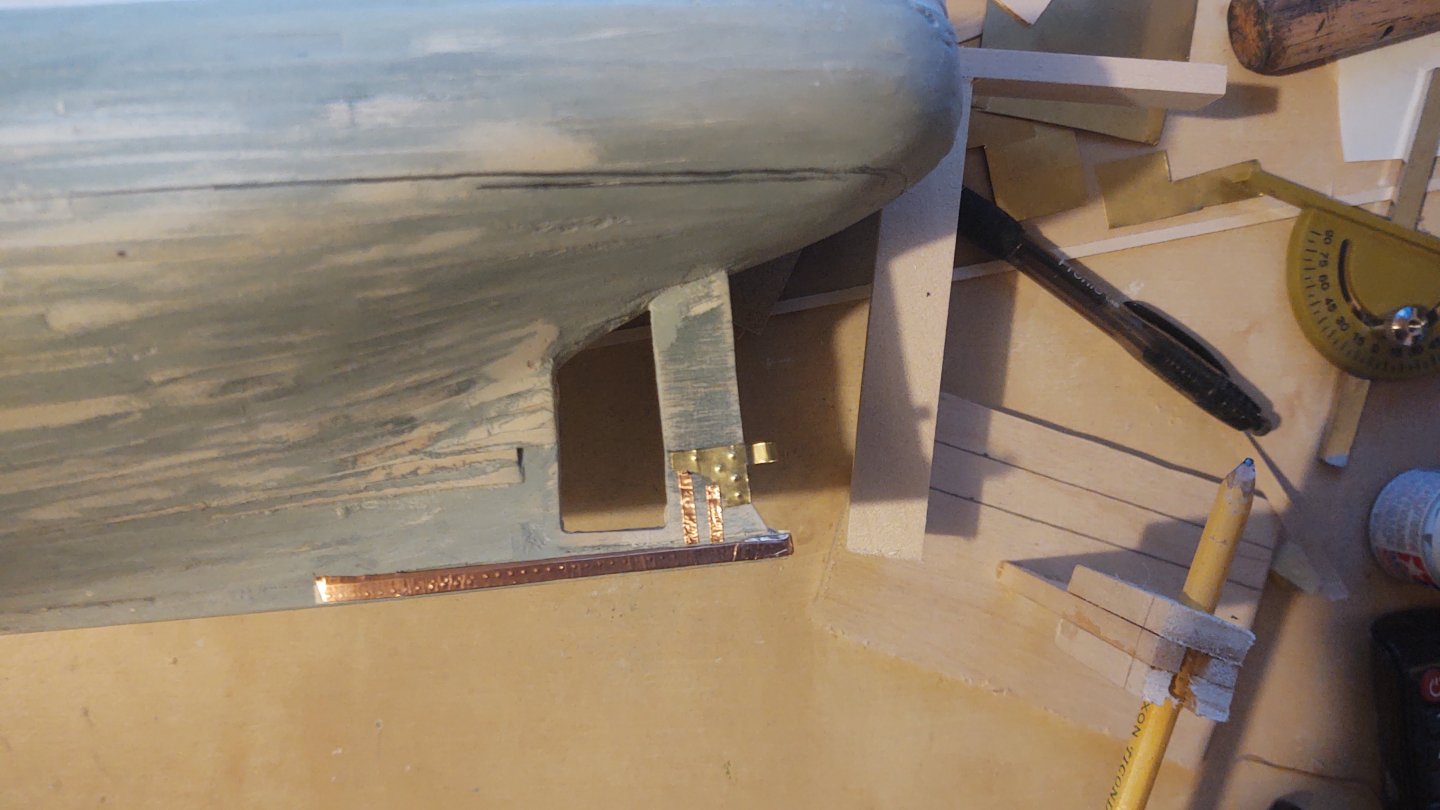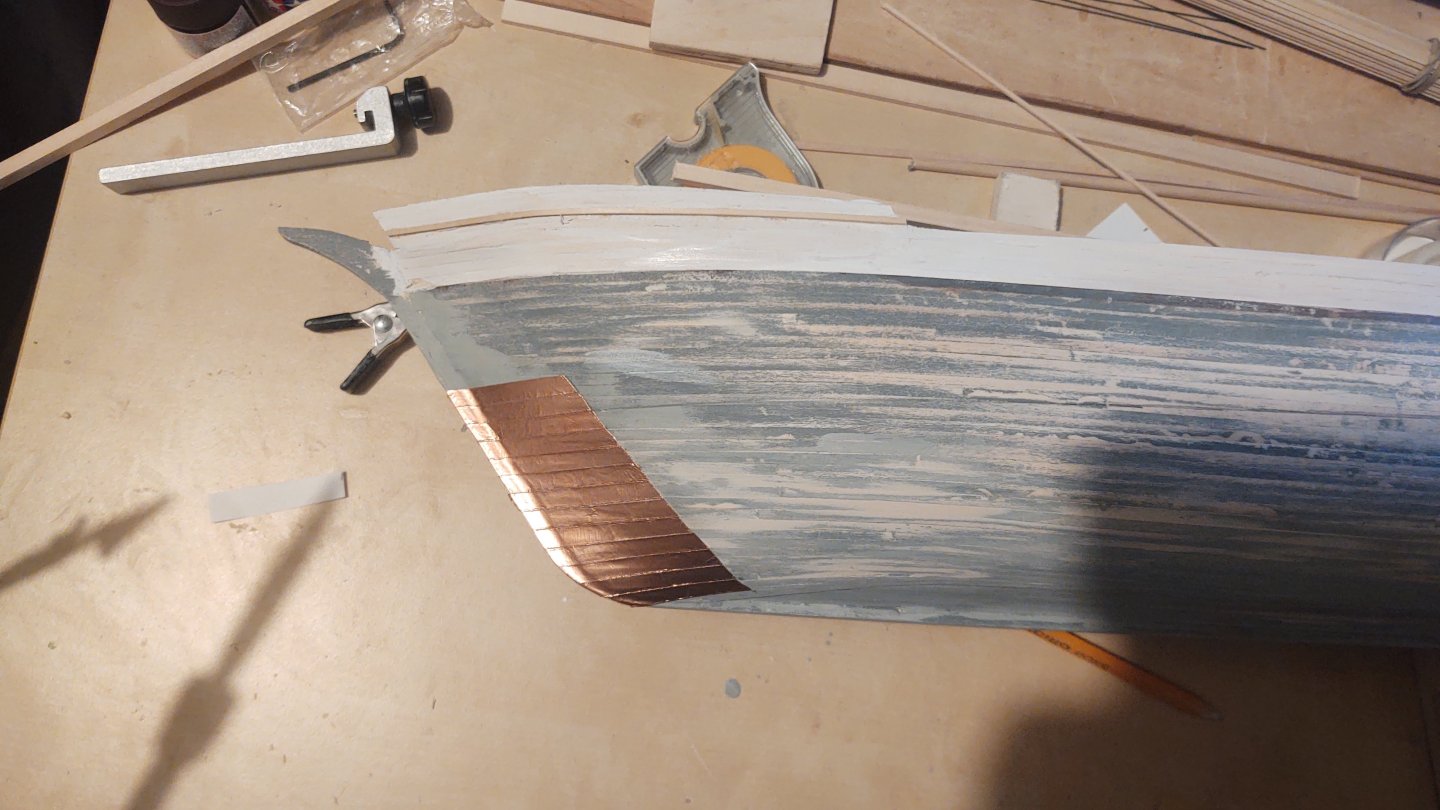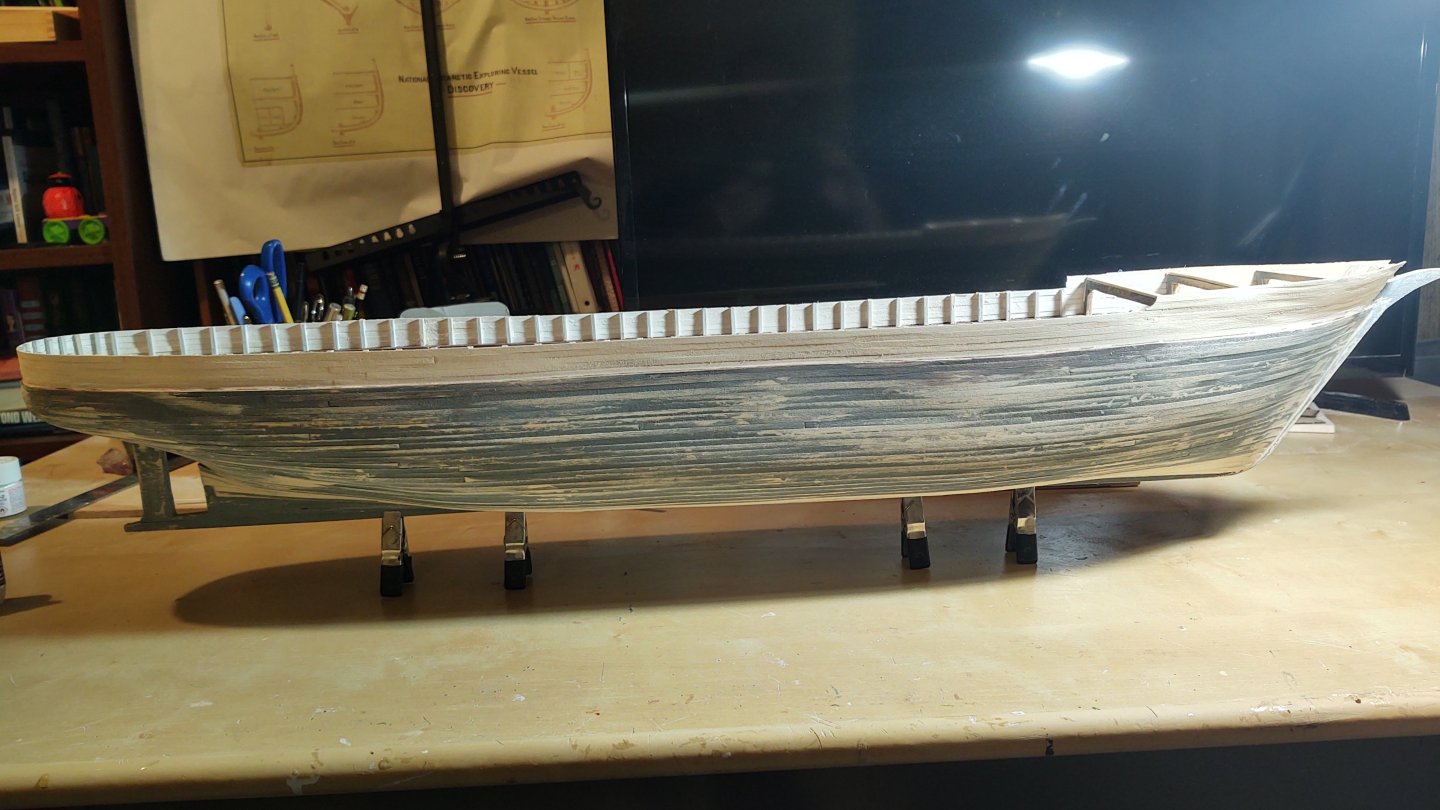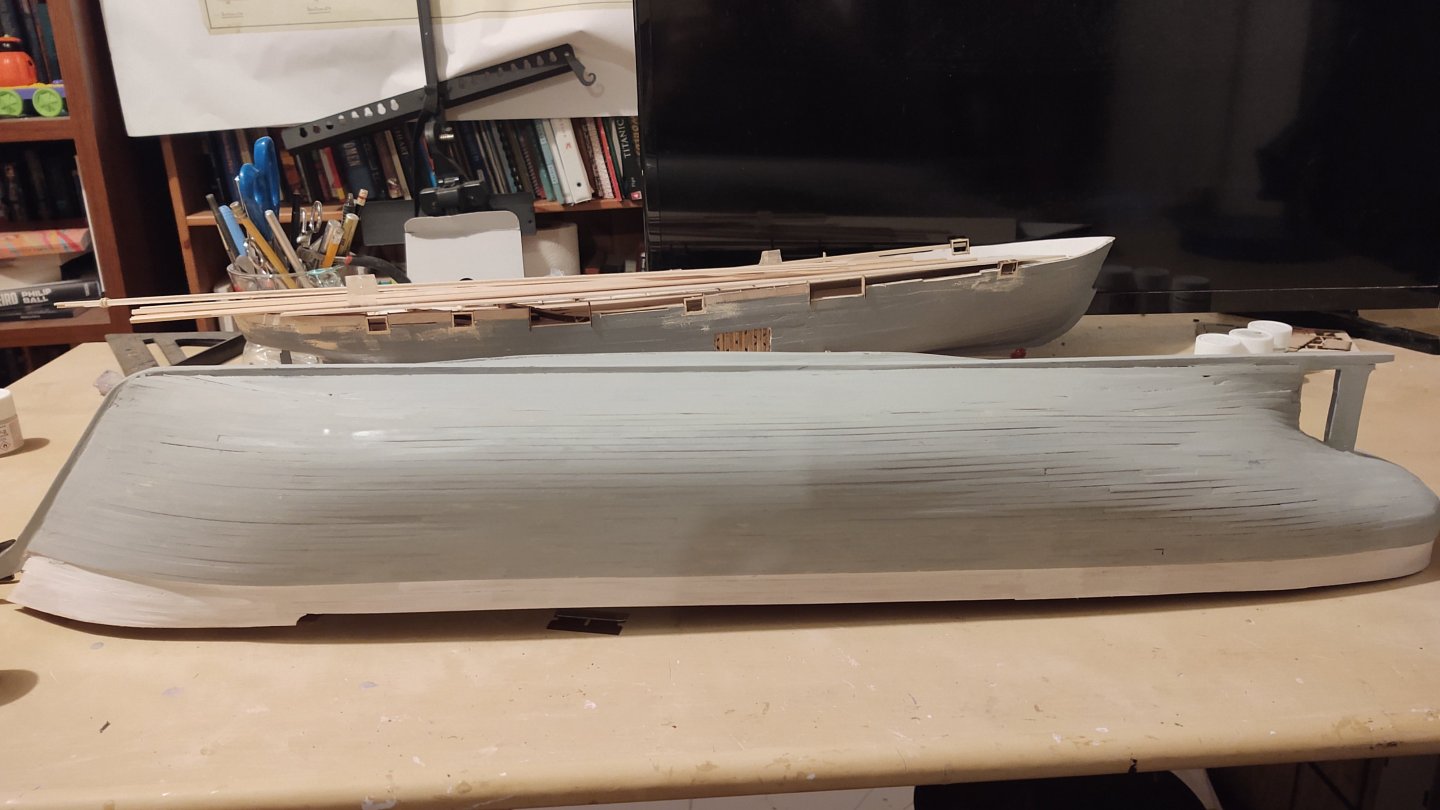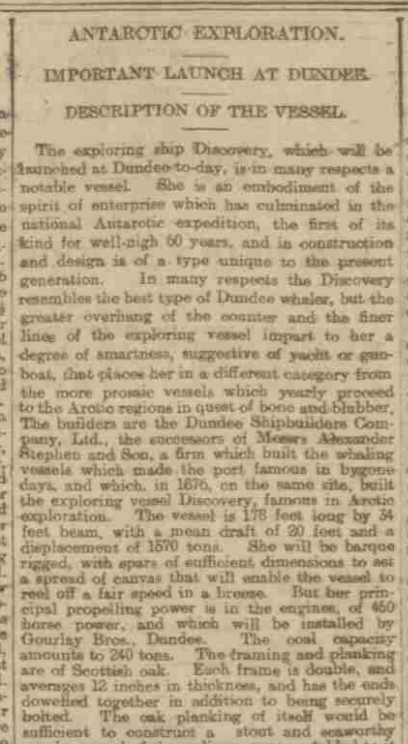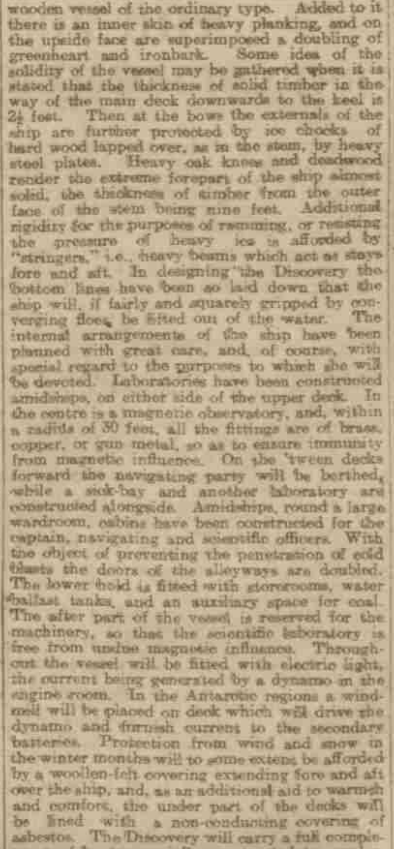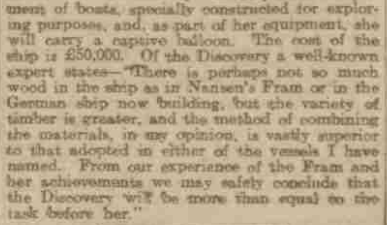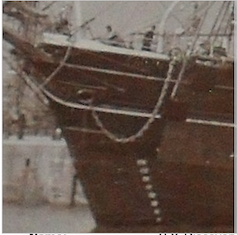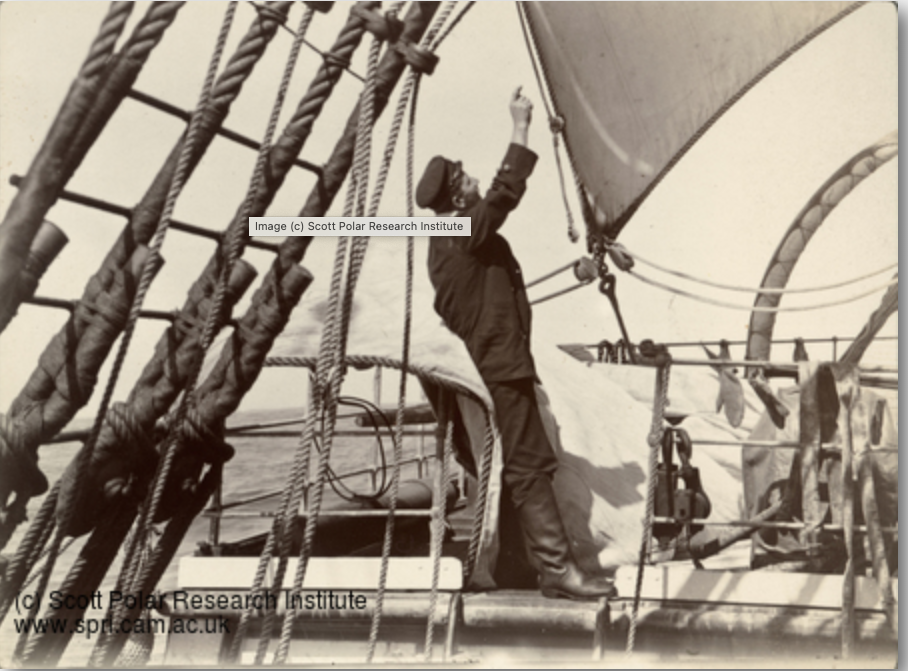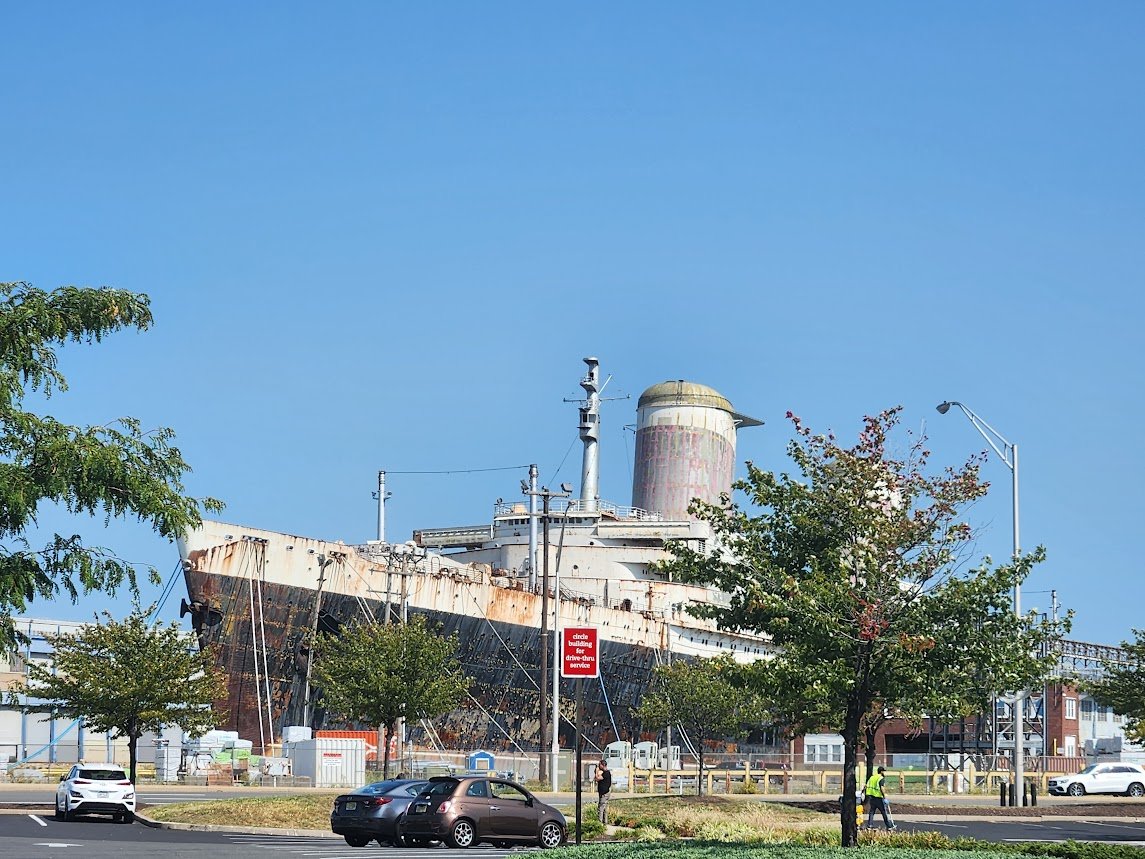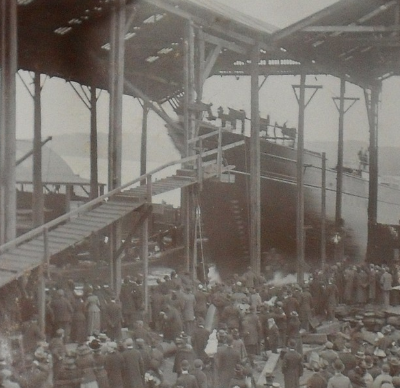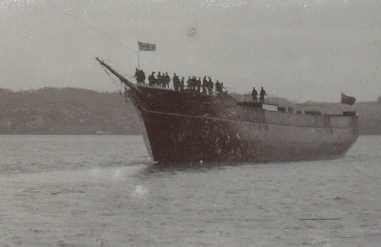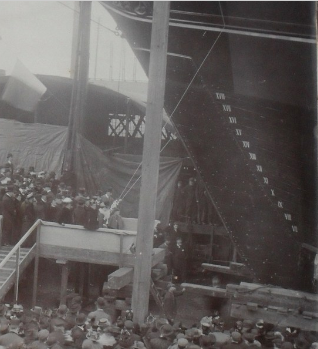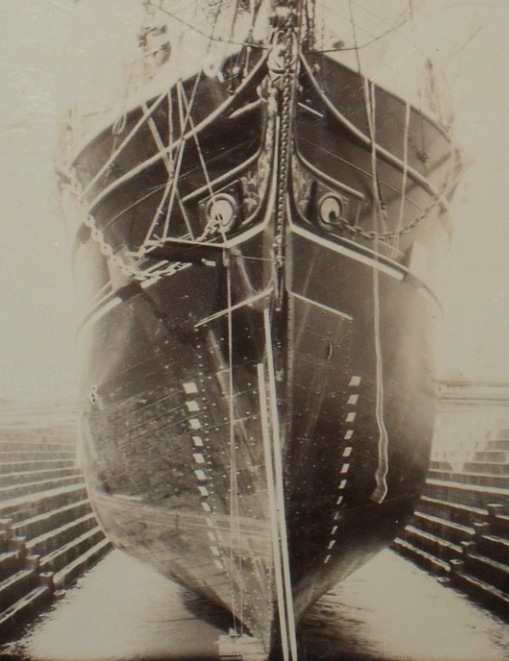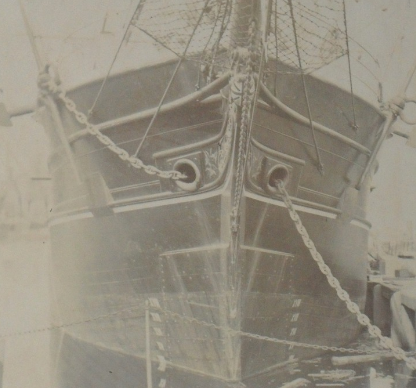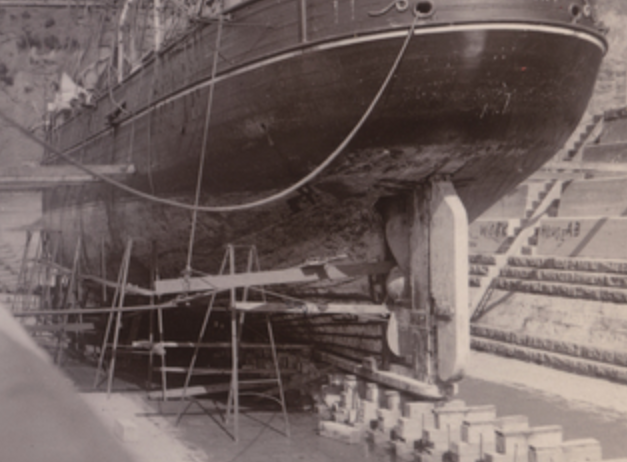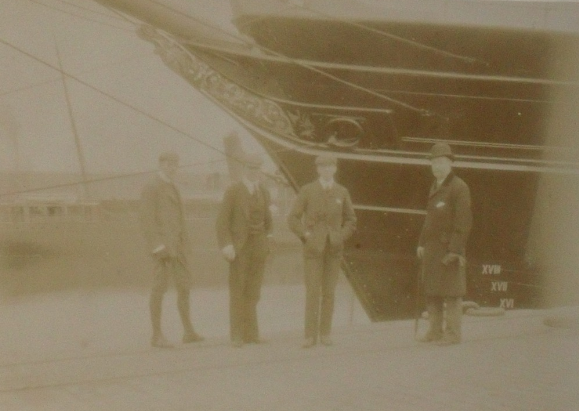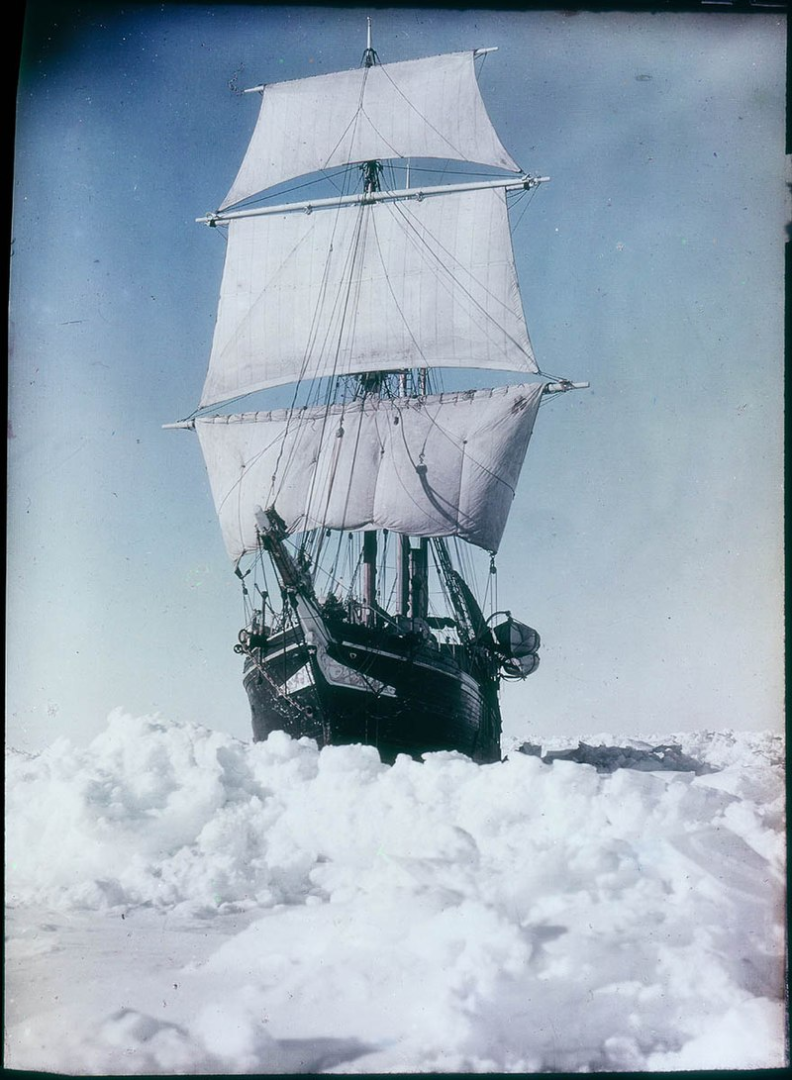-
Posts
710 -
Joined
-
Last visited
Content Type
Profiles
Forums
Gallery
Events
Everything posted by gak1965
-
As they say, "apart from that Mrs. Lincoln, how was the play" 😀 Actually, it was very relaxing. Because I'm job hunting right now, and my wife and I both have elderly parents, we didn't want to completely disconnect, so we paid for basic internet for one device. However, it was actually pretty easy to ignore the outside world, which was our goal. We were still in the bottom 10% of the age distribution on the ship (there were some families with kids, and one or two newlyweds), but this is definitely a more mature crowd. It's Cunard, so more about lectures, trivia, and ballroom dancing than hardcore partying as you might see on a lot of the other ships. And although they weren't overly fussy about it, people dressed nicer for more events, which was kind of fun. I mean, I brought and wore a tuxedo two of the nights - I think the last time I put one on was for my sister's wedding in 1999, and, like I said, it was fun. The stabilizers worked well, the ship was busy without being overly crowded, and I could run on the promenade deck without much trouble. The negatives: We began to find the food a bit boring. It was British, all the time. I don't know why they didn't bring say Indian food, or Italian food into the main dining room occasionally (they had specialty restaurants for both of those cuisines). And if you are really prone to seasickness the ship rolls more than say a cruise ship in the protected waters of the Caribbean. But those are mostly nits if you are just doing a one way trip. A lot of the people were on for a 28 day cruise (Southampton -> Caribbean -> New York -> Southampton), and I think those nits would start bothering me more by that point. Bottom line is that if you have the time to spare, the cost isn't radically different than an economy plus airline ticket, and it is a lot less hassle than an airport (although I will say that the terminal in Southampton is a bit of a dump). If my 88 year old father and his 85 year old girlfriend got a yen to go to the UK, I'd send them this way - cheaper, more fun, and less stressful - no jet lag, for example. And it is a classic journey, one that our grandparents took. I didn't get to see the Statue of Liberty coming in (I was in quarantine and we were on the wrong side of the ship to see it from our cabin), but my wife did, and that's a pretty iconic experience. Regards, George PS - We booked a "sheltered balcony" cabin, which I can't recommend enough. They are lower in the ship (we were on deck 5), the common areas, in contrast to most ships were on very low decks (generally 2 and 3) so that the dining room and show venues don't roll too much, and the main promenade is on deck 7. We wound up not taking a lot of pictures of this, but your cabin has a double wide glass door, so lots of natural light, and a small balcony with two chairs and a table. But unlike the balconies on the higher decks (basically open, and separated only by glass partitions, these balconies are cut into the outer part of the ship's hull. This is the only picture we took that shows it well - we were already docked in Brooklyn: Basically, if the wind is howling (and we had 40 knot headwinds + 20 knots of ship speed some days) you don't get nearly as blown around as if you are in the open balcony, but can still step out and get some nice air directly from your cabin (and when I was quarantined I really appreciated that). The visibility isn't as good sitting in the chairs, but in December we weren't likely to be doing that for long anyway, and the sea remained the sea. It wasn't like we were in Alaska or Norway and would be viewing many sights from the ship.
-
Well, we are (almost) back (sitting in the train hall in NYC. A couple of images for you all. First, a Santa bike ride at London Waterloo on our way to Southampton. A bit of sea: A model of the QM2 (large, scale uncertain): Homer a Simpson in one of the bas reliefs: And two photos of the more things change. Nibbed deck planks: And wooden deck gratings It was a nice trip until Thursday when I wound up with a norovirus infection, which is not recommended. Regards, George
-
Congratulations on retiring, I hope you enjoy it. The model is looking fabulous! George
- 342 replies
-
- Flying Fish
- Model Shipways
-
(and 1 more)
Tagged with:
-
Great new Jared. Looking fabulous! George
- 417 replies
-
- Flying Fish
- Model Shipways
-
(and 2 more)
Tagged with:
-
To heck with that! We both intend sail the Atlantic on a sea of wine and meals prepared by someone else. I take your point though. The morning of that storm in Alaska (on the 1950s SS Rotterdam) breakfast was much less well attended than usual, and while we were eating, a wave hit one of the portholes just right and blasted it in. We lifted our feet as water rushed under our table, the crew plugged the hole, and we moved to the other dining room. And hey, Dramamine is OTC. Regards, George
-
And where they were going, shrinkage would be an issue... Yep. What I have been finding is that you need to be really careful. I was looking at a web page I recently found with a listing of the ship's crew, and some photos. https://www.coolantarctica.com/Antarctica fact file/History/antarctic_whos_who_discovery.php In theory this was about the 1901-1904 voyage. There was a signed photo of the ship included, and I had a start, because it looked like the bowsprit was not the single pole shown in the plans, but the two piece bowsprit/jibboom on the current ship. But, looking more carefully at the signatures, the people that signed were from the 1929-1931 BANZARE expedition, that also used the (post-refit) Discovery. Stuff from Dundee Heritage is much more careful, but they seem to have much more information on the refitted (i.e. current) ship than the original. Incidentally, if anyone actually wants to make the current ship, Dundee Heritage has been digitizing the refit plans - they are there for the asking. An update. I decided to tackle the forecastle next. It turns out I needed to repair a broken chunk of the forecastle first, but simple to do. There are two things that need to be in the forecastle (which is sealed off): a resting place for the bowsprit and an anchor point for the lower main forestays. The latter is here: And here are the two of them mounted in the forecastle. The clamps were holding a couple of planks I was pre-bending to become the edges of the deck planking on the forecastle. I then installed the sub deck (first cutting a convenient path for the bowsprit in one of the supports built into the subdeck, and then planked it. A couple of the planks took the stain way more than the others, but, it is what it is. I bought them at my local hobby shop, I wonder if maybe they were a different batch. Here is the ship as a whole from two slightly different views. Next up is going to be the bulkhead that closes off the forecastle (minus the doors), rudder and prop, the decorative work on the prow, and then the main rail. Finally, here is your historical Discovery photo for the entry. This is the crew looking forward, sitting between the main and foremasts. The structure on the left (aft) is the above deck portion of the engine room and one of two reels attached to that structure. Good views of the primary boat frames. We learn several things from this photo. 1) The main mast also has tied ratlines, rather than the slats on the current ship (a previous photo indicated that the foremast was similar. However, I think that the shrouds are wire as indicated in the plans, as opposed to the foremast whose plans (and another photo) indicate are hemp (no metal within 9 meters/30 feet of the magnetic observatory). The modern ship has a bulge in the main rail to accommodate the chainplates that are not shown on the plans and that don't seem to be present here. Finally, the modern ship has the metal engine room structure painted white, and that is definitely not the case here. It's not black/navy blue - compare the color with the sailor's uniforms - maybe just raw steel? But I would assume you would want some kind of protective coating on anything going to sea - some kind of gray? Will have to noodle on that a bit. This is probably my last update for a couple of weeks. My wife and I just turned or are just about to turn 60, so we are taking a bucket list trip, flying to London on Wednesday, and taking the Queen Mary 2 from Southampton to New York. It's surprisingly affordable this time of year (perhaps because the North Atlantic is rough and cold?), so we figured what the heck. We've both spent plenty of time at sea in rough weather, including a winter storm (40 ft seas and 75 MPH winds) off Alaska on our honeymoon and the ability to disconnect will be good. As always, thanks for looking in and the likes. Regards, George
-
Thanks Keith! It's hard to judge exactly, but my read is that the planks in the photo above are between 4 or 6 inches wide (depends on how big the sailor's feet are). As a result, it's probably a bit small as the planks are 1/16 which is to say 4.5 inches at scale. The next commonly available size was 3/32 which is 6.75 inches at scale, and I prefer to err on the small rather than the large side. Regards, George
-
Thanks Rick! Well, a bit of an update. I've put the main deck planking on. As I mentioned, the junction at the stern is basically in a single joint, but it's going to be covered by a monkey poop, so no one is going to see it at the stern. First, mostly done: And complete: Eagle-eyed observers will note that I fitted a subdeck on the forcastle. I will glue that in place once I've set up the mounting point for the bowsprit and a couple of anchor points for the lower main forestays (which annoyingly mount inside the closed forecastle), and then will put the forecastle deck in place. As an aside, there are two doors into the forecastle from the main deck, which I will not be installing until after the standing rigging is in place, as that is how I intend to get to the forestay anchor points. Given the ship's current state, I thought I would share this one picture from Dundee Heritage Trust. It's of the Discovery in 1923, as she was going in for a refit prior to becoming an oceanographic vessel (and in many ways becoming the ship she is today). I'm pleased that there is a certain resemblance here to the model. I've started thinking about the deck furniture and this has got me deep into questions about how much to trust various sources, and specifically the current ship. As I've shown before, the plans have two deck houses in the stern that butt up against the monkey poop. Between the deck houses are the access port so that you can repair the prop, and the rudder post. Here is a picture of the starboard deckhouse (and a giant albatross) (from the Scott Polar Research Institute) Note a couple of things here. The deckhouse runs right up to the main rail and has doors on the forward side. You will note the officer standing on a rectangular metal conduit - that is the path for the chains that operate the tiller. You will also note that there is a lot of open space. By contrast, here are some pictures of the ship today (all from Wikipedia). Looking forward: And looking aft: The deck houses are smaller, have no forward doors, are closer together (it's jammed up against the access point for the screw, and the steering chains go to the outside of the deckhouse, not the inside) and do not touch the main rail. Bottom line is that as nice as it is to have the real ship around, about the only thing that can be trusted is what is shown in that reconstruction photo above - the hull. Everything else is going to have to come from plans or photos (and ones from 1901-1904, not ones after the 1923 refit). Which is okay, I just need to keep reminding myself. As always, thanks for looking in and the likes. Regards, George
-
Jared, You are really flying through the rigging process! Looking great! Regards, George
- 417 replies
-
- Flying Fish
- Model Shipways
-
(and 2 more)
Tagged with:
-
Okay, another brief update. The outer hull is painted. It needs a bit of touch up, but otherwise is in pretty good shape. I've subsequently started the deck. Annoyingly, the main deck needs to be 24.5 inches long, and I can primarily find 24 inch long lumber. So, the question is whether to do a proper, stepped set of planks or to find some alternative. Ultimately I remembered that the last couple of inches of the main deck are covered by a monkey poop and won't really be visible (as seen here): So, bottom line is that I'm just going to join them all at the stern. It's not as neat as staggered joints, but it will be hidden, so, no matter. The forecastle is closed on the Discovery, so the deck only needs to extend a bit forward of the third bulkhead. As always, thanks for looking in and the likes! Regards, George
-
Well, some paint going on the hull. So - the first decision was what color to paint below the load water line. In the end, I decided to use the Tamiya "hull red", which I realize is an IJN color, but it represents a reddish brown lead paint color. And because it is darker, it seems more consistent with the relatively small difference in shading we see on those black and white photos, for example, this one: Here is the model with just the hull red to the load waterline. You will note that I have painted the bulwarks white - not because they are going to end up that color, but because that way I sealed any gaps so when the black paint goes on it will not leak through to the inner bulwarks which are white. Second, you will see that I have painted a 1/8" white stripe just below the bulwarks. As you see in the above photo, there is a white stripe, but that stripe is below a wale on the hull. That wale is going to be made with black painted 1/16 inch square stock that will be attached at the top of the hull stripe, leaving a 1/16 inch (4.5 inches at scale) white stripe as shown above. And here she is with the black paint. You can see that the stripe at the stern is wider. I need to soak and pre-bend a 1/16 strip to go around the stern, and then I will paint the remainder of the bulwark in that area once I can no longer drip onto the lower part of the stripe. Bottom line is that it needs some touchup, but the stripe is in place and I think that the colors are at least a reasonable, defensible choice even if it turns out I am wrong. Thanks for looking in and the likes! Regards, George
-
Do you know how loose the mast was in the socket? To put it another way, do you think you can move it without redrilling the hole? Are you confident that it isn't just being pulled to one side by tension on the shrouds? The lanyards make sense as a first pass if you have enough room between the deadeyes to correct for the lean without making the shrouds and lanyards look too unbalanced compared to the other masts. Sorry to hear this, but it could be worse. The other two masts look nice, straight and aligned Regards, George
- 417 replies
-
- Flying Fish
- Model Shipways
-
(and 2 more)
Tagged with:
-
Well, finally doing an update. It's been a somewhat chaotic time for me. I'm preemptively looking for a new position, and we went on vacation with my older daughter who lives in Boise. So, good and bad, but either way reduced time in the shipyard. However, before we get there, a couple of photos from our time with our daughter in the Dakotas. We met her in Denver and drove to Rapid City and stopped a bit on the way. So, first, in Nebraska (where she lived before she moved to Boise, but never saw these sights. Scott's Bluff National Monument: Chimney Rock National Historic Site: Into the Black Hills of South Dakota, we have a number of sites. Mount Rushmore National Memorial: Wind Cave National Park. Unfortunately, the cave was closed, but the park has amazing hiking: and all kinds of interesting wildlife including prairie dog towns and these: Badlands National Park where we saw Bighorn Sheep and rugged country: Devil's Tower in eastern Wyoming: FYI - on a nautical theme, this is an old photo, but you see it everywhere in Wyoming: Finally, one additional stop, Minuteman Missile National Historical Site. We stopped at the Visitors Center but for some reason they had closed the actual missile site that day. Nevertheless, here is the Delta-9 site. One thing I have never been able to explain to my children (who are 26 and 24) is the existential dread that we all had during the Cold War. As I've mentioned in one of my other build logs, I remember the Destroyer I was on being shadowed by a Krivak in the Med off the coast of Lebanon in 1984, the Able Archer 83 fallout, and when I was in Kyiv in 2008, it was really weird to go visit the Mother Ukraine statue (then called the Rodina Mat) and see something similar to this in the form of an R12 MRBM. I certainly never expected to get this close to a (decommissioned) missile silo in my younger days. I wonder if I might have been able to provide a bit more context to my daughter if she had been able to see the missile in situ (it's visible through a glass cupola you can see in the center of the photo so that its decommissioned status can be verified by satellite) but this was the best we could do. On to the model. I've sanded the hull to where it is now ready to start accepting some of the additional components that are needed prior to painting it for real. This is the first version of the lower mount for the rudder (I realized the join piece in the middle is in the wrong place and remade it, but it gives you the idea for what I'm doing. The two roughly triangular pieces mount on the stern post, and the connector is used to create a circular mounting point for the bottom of the rudder 1/8 of an inch in diameter, with a doubled connection of 1/16 inch, with the rest of the connector (the two, 1/8 inch segments closest to the triangular elements mounted on the back of the keel. If that sounds a bit weird, here it is in situ, you can see where the loop is made and the connector is. In addition, I used a ponce wheel on some copper tape to mark some additional ironwork that is on the keel and the sternpost. Discovery has iron plates on the bow to aid in the breaking of ice. These are being made from copper tape to keep them from getting too far out of scale. I'm looking for some very tiny nails to use on the tape to represent the relatively small number of bolts. I'll see what I can find - if I can't find small enough ones I'll leave them off - they won't be very visible once they are painted anyway. The iron shield extends slightly above the load water line, which is now marked on the hull (you can see it as a pencil line). In fact, I used the LWL to direct the placement of the copper tape representing the plates. You will also see that I have installed some (unpainted) wood that represents the continuation of the main rail once it reaches the forecastle. Finally, I pre-bent and did the initial trim on the trailboards (I hope I've got the right terminology here, please correct me if I'm wrong). They will contain the scrollwork on the stem and will not go on until after the hull is painted, but I wanted to shape them first. My plan is to practice carving the scroll work on scrap until I'm confident enough to do the job and then work on the shaped pieces, but here they are for now. Initial piece (soaked in hot water and allowed to dry on the model. And with the initial trimming. I think I need to trim the area that currently overlaps the prow - need to check back with the plans. Pardon the long and rambling post. As always, thanks for looking in! Regards, George
-
For what it's worth, being in a small boat in the California coastal zone is one of only two times I've been seasick, and I've ridden ferries to the Arran Islands in gales, and been through a storm with 75 mph winds and 40 foot seas during our honeymoon (off the coast of Alaska in the old 1950s SS Rotterdam) without difficulty. The combination of (a) small boat, (b) slow, rolling chop, and (c) the fog that rolls in during the morning makes you completely lose the horizon and your senses don't know what to think. The other time was in an absurdly overheated ferry heading out into the arctic ocean. I stayed on deck for the return - rather be cold than seasick. The Cape is looking great. It's nice to see the less loved ships get some attention. Regards, George
- 362 replies
-
- minesweeper
- Cape
-
(and 1 more)
Tagged with:
-
I put the tackles in place before the fife rails, and it helped sort of. One thing I found is that if I did that and didn't bring the blocks to the approximately correct distance apart ahead of time, when I did arrange the blocks correctly, the "embedded twist" (sorry can't think of anything else) in the lines caused the blocks to kind of torsion (basically they started twisting relative to each other). Some I could untwist, others I had to do what you describe - pull it out, re-rig, and then reinstall the bolt. One more thing to watch out for is if you bump into the yard, it can pull the bolt out or stretch anything stretchable and you wind up with a "saggy" line. Needless to say, I know this because I did it many times.
- 417 replies
-
- Flying Fish
- Model Shipways
-
(and 2 more)
Tagged with:
-
Getting the first running rigging going calls for the good stuff. I personally would go for Highland Park 18, or Balvenie Doublewood, but your mileage may vary... Cheers! George
- 417 replies
-
- Flying Fish
- Model Shipways
-
(and 2 more)
Tagged with:
-
Well, another update. First the ship. The bulwarks are done, as are the bulwarks that enclose the forecastle. Two images. The first image is after the first sanding of the primered hull. As you might expect it's pretty ugly as it removes the primer on the 'high' parts of the hull: After sanding and with a second coat of primer: The second coat of primer looks much better than the first at application. There are still areas that need some filler, and sanding, but it's definitely starting to shape up. BTW, I painted the bulwarks white on the outside to seal any gaps where leakage won't damage the inside. Hopefully when I put the black on the bulwarks it will stay on the outside where it belongs. As to the colors. I've been doing additional research, but haven't found anything definitive yet. Via the British Newspaper Archive, we find the following report from the Dundee Evening Post on 21 March 1901: ANTARCTIC SHIP DISCOVERY. LAUNCH THIS AFTERNOON. A large assemblage of spectators was present iu Panmure Shipyard this afternoon [to] witness the launch of the exploration vessel Discovery. The building of this interesting craft has occupied little over a year, the first section the keei having been laid in the early days of M-irch last year. It is expected that the rigging and fitting out operations will occupy the best part of six weeks, and she will then proceed London for stores. Several members of the expedition party reached Dundee yesterday, aud, indeed, Professor Gregory, of Melbourne University, was the principal absentee. Invitations were issued to the following Sir Clements R. and Lady Markham; Sir Reginald Ogilvy, Bart.; Sir James Low Lady Low; Mr and Mrs G. W. Baxter; W. Thomson; Mr I. J. Weinberg; the Hon. J. C. Higgins, TJ.S. Consul; Mr E. Maitland; Mr and Mrs W. H. Fergusscn; Mr and Mrs W. Low; Colonel Cautlev, R.E.; Colonel Baillie; Captain R. F. Scott.. K.N., commander of expedition, and Mrs Scott; Lieutenant Armitage, R.N.R.; Lieutenant Royds, R.N., Mrs Rovds and Misses Royds; Mr R. She! ton, R.N.; Keltic; Dr Koettlitz (scientific staff; and Mrs Koettlitz; Mr George Murray, British Museum (Professor Gregory's deputy); Mr C. Longhurst, secretary National Antarctic Expedition; Mr H. W. Smyth, London; Dr Hill (scientific staff); Mr R. Paterson, manager, Panmure Shipyard, and Mrs Paterson; Mr G. E. Kidd. secretary, Dundee Shipbuilders' Company, Limited, and Mrs Kidd; Bailie Barrie; Treasurer Ritchie; Lord Dean of Guild Bell; Captain Wilson Barker, R.N.R.; Captain Montgomery, R.E.; Commander Austin, R.N.; Surgeon Brown, R.N.; Captain Abbot Anderson; Professor D'Arcy Thompson; Dr and Mrs Bruce, Edinburgh; Mr A. Leitch and Miss Leitch, Dundee; Mr and Mrs R. Leitch: Mr and Mrs Rettis; Mr Thomas Winton; Air John and Miss Henderson; Mr and Mrs Wilson; Mr and Mrs J. P. Newton; Mr H. G. Gourlav, Mr Charles Gourlay, and Mr J. G. Lyon (Gourlay Brothers & Co.); Mr Grant Barclay (Caledon Shipbuilding and Engineering Co.. Ltd.); Mr William Morrison and Mr Howie, Lloyds' Surveyors; Mr A. Watt, Board Trade .Surveyor; Mr F. Stephen; Mr F. W. Emmet; Mr Bartholomew, Edinburgh; Mr Stuart Gray, Kuitauns; David Bruce, Loudon; Mr I). Wyllie, Dundee; Mr B. L. Nairn; Mr William Kinnear; Mr R. V. Scroggie; Mr James Mitchell, and the local whaling captains. DECORATIONS AT THE HARBOUR. In honour of the occasion bunting was plentifully displayed at the harbour. The whalers, needless to say, were prominent in their decorations. Every vessel had a streamer of bunting to the mast-head, and an appropriate touch was to be seen in the case of the North Pole vessel America, where the Stars and Stripes floated alongside the Union Jack, the mission of the America compared with that of the Discovery being literally "wide as the Poles asunder." The flagstaff's at the dockgates were also gaily bedecked, the whole going to make up a bright and animated picture. THE LAUNCHING CEREMONY. For the purposes of the launch huge staging was erected close the stem of the vessel, and to accommodate the launching party a platform about ten feet square had been erected a few feet in front. A barricade had also been placed about ten feet from the side the vessel to keep back the spectators, and prevent them hampering the workmen in the discharge o[f] their duties. The attendance of spectators was unusually large, and it is estimated that the time of the launch there were about 3000 people congregated within the Panmure Yard. They began to gather shortly after one o'clock, and little after two nearly every position from which a view of the approaching launch could be obtained was occupied. At the Marine Parade the crowd was especially dense, and great difficulty prevailed in keeping them in order. SHE'S OFF. By three o'clock everything was in readiness. The gangway leading to the ship was cast on, and thos[e] who were booked for the " maiden vo[y]age" the Discovery gathered on the forecastle, and from their high perch watched the preparations for the christening. The launching party appeared about, quarter-past three. Sir Clements Markham, Lady Markham, and the other distinguished guests being the centre of .attention. The party having taken their position, Mr Paterson, after seeing everything was in readiness, gave the older to the men who were in waiting with hammers in hand. A brisk hammering then took place, and the shores supporting the vessel tumbled to the ground. A slight pause was then made, during which Lady Markham let go the bottle of wine, which, encased in a bouquet tied with the tri-coloured ribbon, was swung cords from the forecastle of the Discovery. The bottle struck the bows, but, to the surprise of the spectators, who expected to see the vessel glide away, she remained fast. It then transpired that the easing operations had not been completed. A minute two of tension followed. More brisk hammering then took place, and the cry broke forth —" There she goes." The vessel, indeed, had begun to move. Gaining speed, she rushed on and with terrific splash the Discovery took the water. The tugs Renown and Excelsior were in waiting, and at once took her in tow. She was berthed in Victoria Dock, where she will be engined. A luncheon was held late in the afternoon. AN IMPORTANT LETTER. The following letter has been received from W. E. Smith, chief constructor for the Admiralty, a gentleman who designed the Discovery:— The building of the Discovery is unique a character that much more than the usual interest attaches to her. Usually when vessel is required to built there no difficulty obtaining tenders from large [nu]mber[s] of competent firms, any one of which might safely entrusted with the work. The Discovery, however, [is] of [n]o usual character, either as regards the material of her construction or regards her design. A large number firms were invited tender, but the tender from the Dundee Shipbuilders Company was the only one that indicated any real determination to grapple with the difficulties and novelty of her design if opportunity were afforded. It might perhaps have been anticipated from the past history and experience of the firm that they would not flinch from the difficulties of the case, but the fact remains that stood foremost in the breach and undertook to build the without, which the [e]xpedition could not be undertaken. The firm having accepted the responsibilities involved the building of the vessel, once set. work in the actual construction of the ship, and have vigorously and continuously prosecuted that work ever since, and have endeavoured their part nothing undone that could contribute the seaworthiness of the vessel or the comfort and convenience of those board: and there firm in the country having greater knowledge of what, necessary in the[s]e particulars for this type vessel than the Dundee Shipbuilders Company. In the interests of the expedition [I] have, [I] am afraid, been sometimes exacting, but I [am] most pleased to say that have been very handsomely met, and my work has pleasant one. desire particularly thank Mr for the very great interest he. has taken the work and the skill in which has executed it. I am much indebted to him for many useful suggestions, the adoption of which will make the ship more efficient than she otherwise would have been. I [am an] old wooden shipbuilder my[s]elf, and I must congratulate the firm on having in their [ser]vice yard foreman the qualifications of Mr John Smith, who has, under Mr Paterson's directions, so thoroughly attended the actual work of building. I hope w[e] live to s[e]e another Discovery launched, and that the Dundee Shipbuilders Company will again ready undertake the work they have [ris]en [to] the occasion. Nothing about the color of the ship unfortunately. Similarly from the Aberdeen Journal (same day): Again, nothing about the color. [As an aside, the article mentions, and I've seen photos, that she carries a balloon. I was going to model the gas tanks (stored above one of the after deck houses, but a tethered balloon might be more interesting yet.] However, I have concluded that there must have been some different color up to the top Plimsol line. Here is another photo with an apparent color change. The most common colors were red and green. It has to be something that doesn't use iron oxide based pigments, so that suggests either red lead (which apparently uses lead II|IV oxide as a pigment, or verdigris (copper II oxide), or emerald green (copper(II) acetate triarsenite or copper(II) acetoarsenite). The arsenates and copper compounds would act as antifouling agents on their own. Bottom line is that I need to make a decision, and probably pretty soon. I'm now thinking I'll make it green or red, without boot topping. Thanks for looking in and for the likes! Regards, George
-
Glad to be of service. Your Fish is really coming along great! Regards, George
- 602 replies
-
- Flying Fish
- Model Shipways
-
(and 2 more)
Tagged with:
-
Looking great. You are making real progress and fast! Regards, George
- 417 replies
-
- Flying Fish
- Model Shipways
-
(and 2 more)
Tagged with:
-
That could be. The ship is a bit odd in a bunch of ways because of its purpose/mission. For example, the foremast (which has the same size yards as the main) uses hemp rigging (and tied ratlines) vs. metal rigging for the main, presumably because they needed to keep iron away from the magnetic observatory which is aft of the foremast. Clearly there was iron/steel on the ship, but it would have been kept away from the observatory (supposedly the original wardroom upholstery had to be replaced with a version that didn't have metal buttons). If I understand, the primary biocides would have been copper based, but the primary source of color for red paint in those days was iron oxide. Add the copper and it changes the hue somewhat, but don't put in the red to avoid slathering the ship in iron oxide? It's an interesting problem. Regards, George PS - Picture of the foremast standing rigging:
-
The bulwarks are continuing apace (I will put some photos up when they are completed), and that has me thinking about one of the big questions about the hull - namely, what color is it below the waterline. But first, I was in Philadelphia on Monday moving one of my kids from a horror of an apartment to a much nicer one. We went out to the Ikea on Christopher Columbus Way to buy her a small table, when I was very surprised to see the SS United States. Probably for the last time before she goes to Florida to become an artificial reef. It's sad to see her go, but off hand, I'm not sure that anyone has the money to really save her. The funny thing is that the ship seemed small, which it is not (I mean the ship is 990 feet overall with a beam of 101.5 feet, and a height of 144 feet from standard load water line to funnel. But compared even to the smaller modern cruise ships (we took a trip on the Holland America ship Konigsdam in 2017) the Big U doesn't have the same amount of bulk. I'm not complaining - her lines are fabulous, but it's still something of a surprise at the difference. Anyway, on to the color below the waterline. The historian at Discovery Cove in Dundee responded to my inquiry, but if the color was recorded, they don't know where. I've been looking for something akin to Duncan McLean's Boston Daily Atlas (there do seem to be a small number of digitized newspapers from Dundee, and perhaps someone mentioned it in a news story about the launching). The historian did however point me to a collection of construction and launching photos (https://www.dhtcollections.com/item/Brand_SYDiscoverybuildandlaunch_0_0_26347_74.html). They are, of course, black and white and more than a bit ambiguous. Here are some of the key photos (or more accurately portions of them). Launch day: Another view of launch day: In the water: When I look at these photos, I'm just not seeing any obvious indications that the bottom was anything but the same color as the rest of the hull - black. Now here are two post-launch photos of Discovery in drydock: and one from Australia: and one from Dundee: The photos from Dundee seem to show a different color at the highest Plimsol line, although the modern ship is not painted that high. The ship had (has) metal ice breaking material on the bow - could that be what is the slightly different color up to the upper Plimsol mark? As to the bow on picture in drydock - could that just be salt (or wear) with the ship running at the standard load water line? I'm starting to think that the correct color is black. And I note that Endurance appears to also be painted black below the waterline as seen in this Paget color photograph by Frank Hurley: Any thoughts welcome. Regards, George
-
Jared, the stunsail booms were moved with tackles. I've seen pictures, but can't seem to find them now - if I figure out where I'll send you snaps. Needless to say, I didn't bother including them. Regards, George
- 417 replies
-
- Flying Fish
- Model Shipways
-
(and 2 more)
Tagged with:
About us
Modelshipworld - Advancing Ship Modeling through Research
SSL Secured
Your security is important for us so this Website is SSL-Secured
NRG Mailing Address
Nautical Research Guild
237 South Lincoln Street
Westmont IL, 60559-1917
Model Ship World ® and the MSW logo are Registered Trademarks, and belong to the Nautical Research Guild (United States Patent and Trademark Office: No. 6,929,264 & No. 6,929,274, registered Dec. 20, 2022)
Helpful Links
About the NRG
If you enjoy building ship models that are historically accurate as well as beautiful, then The Nautical Research Guild (NRG) is just right for you.
The Guild is a non-profit educational organization whose mission is to “Advance Ship Modeling Through Research”. We provide support to our members in their efforts to raise the quality of their model ships.
The Nautical Research Guild has published our world-renowned quarterly magazine, The Nautical Research Journal, since 1955. The pages of the Journal are full of articles by accomplished ship modelers who show you how they create those exquisite details on their models, and by maritime historians who show you the correct details to build. The Journal is available in both print and digital editions. Go to the NRG web site (www.thenrg.org) to download a complimentary digital copy of the Journal. The NRG also publishes plan sets, books and compilations of back issues of the Journal and the former Ships in Scale and Model Ship Builder magazines.




